Samsung The Frame 2025 is a TV like no other – and even though it has competition now, it still does it best. The matte panel, flush with the wall, and one thin cable thanks to the One Connect module make the device resemble a piece of art more than any other screen. The Art Store app continues to offer the best scans of artworks on the market (even if they are subscription-based), and with interchangeable frames, we can match the TV to the interior almost like furniture. When it comes to the picture itself, because after all, we are also talking about a regular TV, there are no major changes, but also no disappointments compared to last year's model LS03D. The Frame still offers high native contrast and solid brightness at 600 nits, which combined with the matte coating provides very comfortable daytime use. The colours are not as vibrant as in glossy screens, but compared to competitive matte constructions – they fare the best. A novelty is the 144 Hz refresh rate, though in practice it will mainly benefit PC gamers. And indeed – in terms of features for gamers, The Frame has nearly everything: low input lag, support for variable refresh rate (VRR), automatic game mode (ALLM), Game Bar, and a unique motion smoother designed for gaming. Unfortunately, not everything is as perfect as it might seem. Why? Because the HGiG mode is missing, which suddenly disappeared from the latest version of the Tizen system. And here Samsung really should respond, as for many gamers this is a key element in choosing a screen. And we fully understand that. Although LS03F The Frame 2025 does not bring major revolutions, it is still a unique TV that, aside from its appearance, offers a quite solid picture and advanced gaming features. It’s just a pity that year after year we also receive new compromises.
- Matching (Score)
- Our verdict
- TV appearance
- Where to buy
- Contrast and black detail
- HDR effect quality
- Factory color reproduction
- Color reproduction after calibration
- Smoothness of tonal transitions
- Image scaling and smoothness of tonal transitions
- Blur and motion smoothness
- Console compatibility and gaming features
- Input lag
- Compatibility with PC
- Viewing angles
- Daytime performance
- Panel details
- TV features
- Apps
- Playing files from USB
- Sound
Samsung The Frame 2025 (LS03F) vs Panasonic W95B
Direct comparison
The Frame / LS03FAU


Panel type: LCD VA
Resolution: 3840x2160
System: Tizen
Model year: 2025
Complete the survey to find out the result

Panel type: LCD VA
Resolution: 3840x2160
System: Amazon FireTV
Model year: 2025
Complete the survey to find out the result

Overall rating
7.0
7.5
Movies and series in UHD quality
6.8
7.3
Classic TV, YouTube
6.5
7.4
Sports broadcasts (TV and apps)
6.4
7.2
Gaming on console
8.4
8.6
TV as a computer monitor
8.2
8.4
Watching in bright light
6.3
7.2
Utility functions
7.2
6.8
Apps
8.7
7.2
Sound quality
6.0
7.9
Complete the survey to find out what fits your preferences
Advantages
Matte panel effectively reduces reflections
Screen customisation option with interchangeable frames + art mode
Free add-ons including wall mount + OneConnect module
High native contrast
Good brightness
High refresh rate - 120/144Hz
Plenty of features for gamers - VRR, ALLM, Gamebar, proprietary motion smoother functioning in games
Great blacks and contrast thanks to 504 local dimming zones and a VA panel
Very high HDR brightness (up to 1400 nits)
Good motion smoothness. 144 Hz panel – perfect for gaming and dynamic content
Support for Dolby Vision, HDR10+
Many features for gamers including: HGiG, ALLM, FreeSync and G-Sync
Low input lag
Well-functioning upscaling and subtle digital image processing
High brightness during the day and effective glare reduction
Pleasant sound with Dolby Atmos support
Ability to record to USB, Bluetooth and jack connection
Disadvantages
No HGiG mode – makes precise HDR settings on the console difficult.
No DTS support – requires additional equipment for some films on Bluray discs.
Paid picture mode
Fire TV system poorly developed in Europe – lacks many applications
Clumsy interface operation and software bugs, e.g. lack of subtitles when playing movies from USB
Local dimming does not work in VRR mode
Narrow viewing angles – typical for VA panels
Only two HDMI 2.1 ports
Our verdict
Panasonic W95B is one of those televisions that not only impresses with its specifications on paper but also delights in practice. It features a fantastic Mini LED screen, offering excellent blacks, very high brightness, and smooth motion, which combined with refined local dimming creates an image close to perfection. Most content looks simply amazing on it, and the low latency game mode with support for key technologies makes it a good choice for gaming as well. However, it's important to remember that the W95B is aimed at a fairly specific group of users – those who are willing to accept weaker usability features in exchange for great picture quality. The Fire TV system in this version is not well refined: some apps are missing, certain functions operate clumsily, and the built-in file player does not even support subtitles. Despite these shortcomings, the Panasonic W95B is a solid, well-crafted piece of equipment that demonstrates that Mini LED can be a true alternative for those who, for some reason, do not want an OLED TV. It is one of the few televisions of this type that can be wholeheartedly recommended, provided that picture quality is the priority, rather than the system and apps.
TV appearance
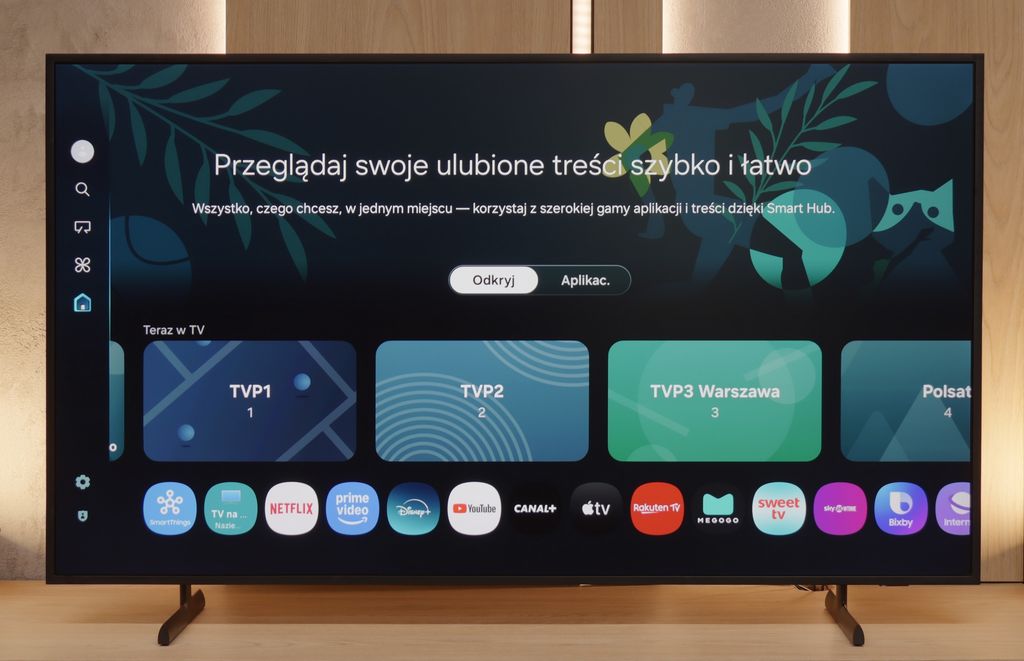
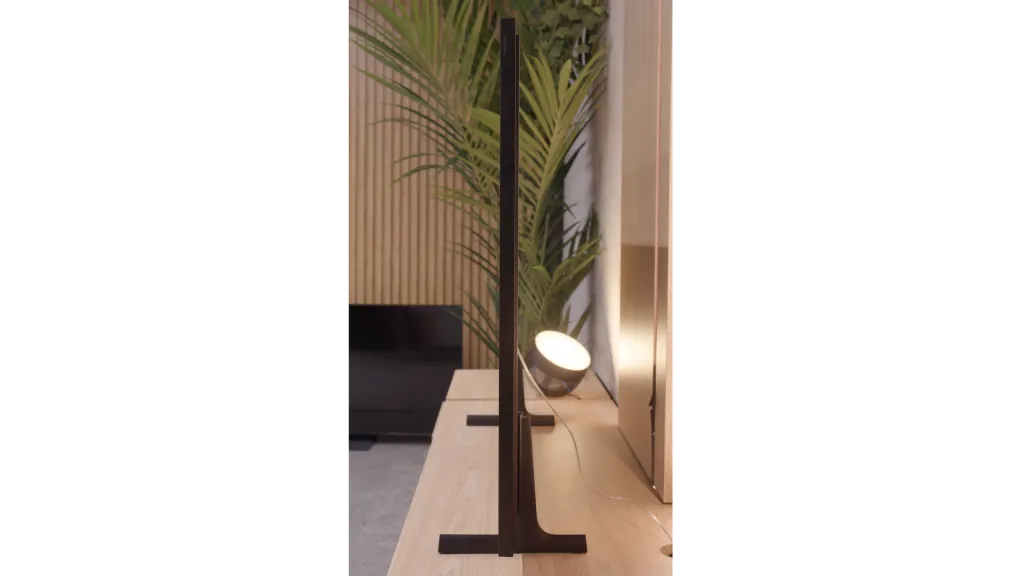

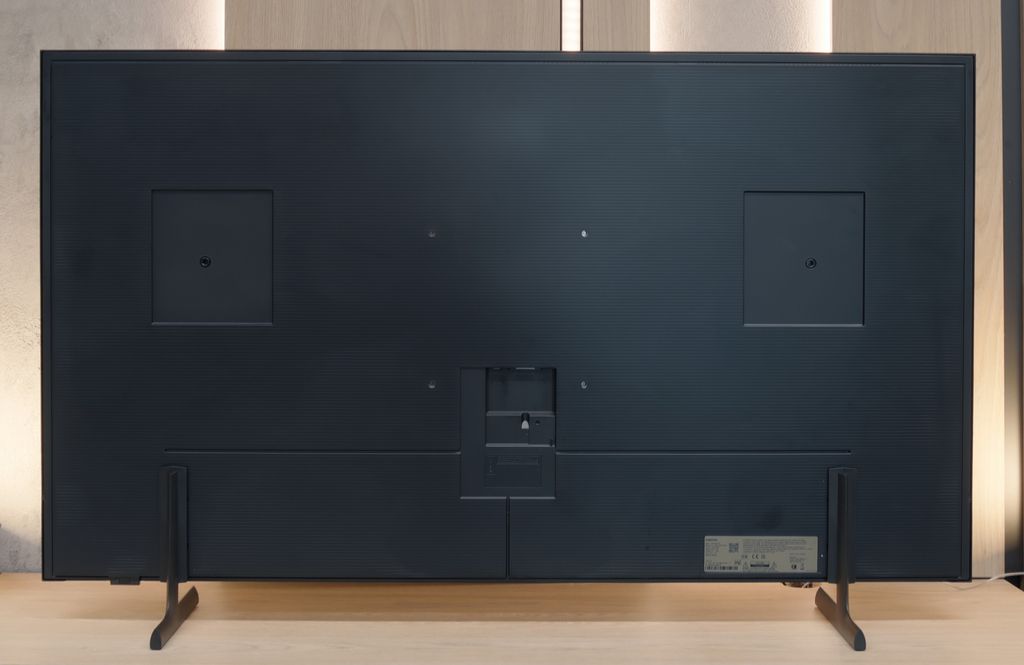
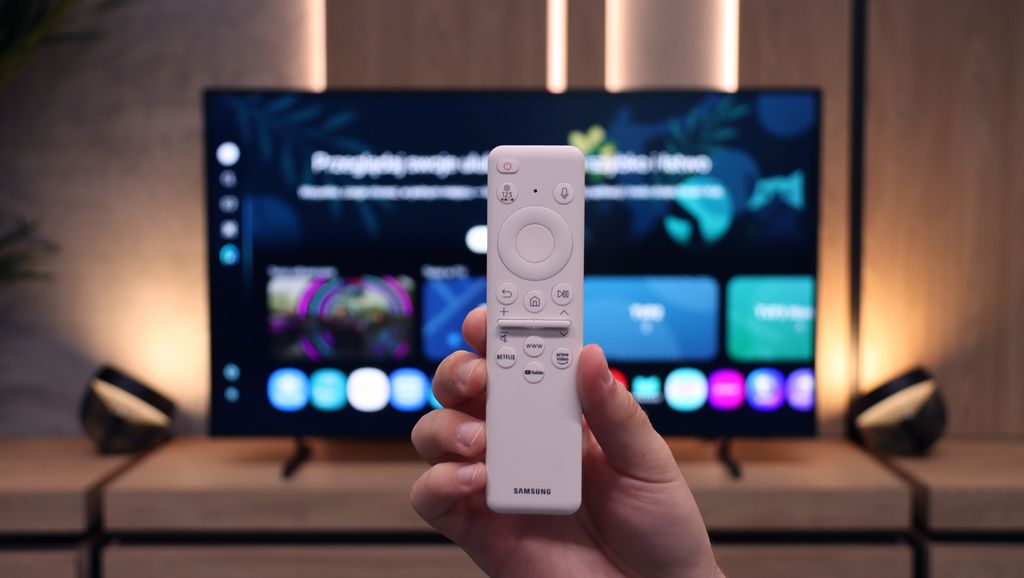

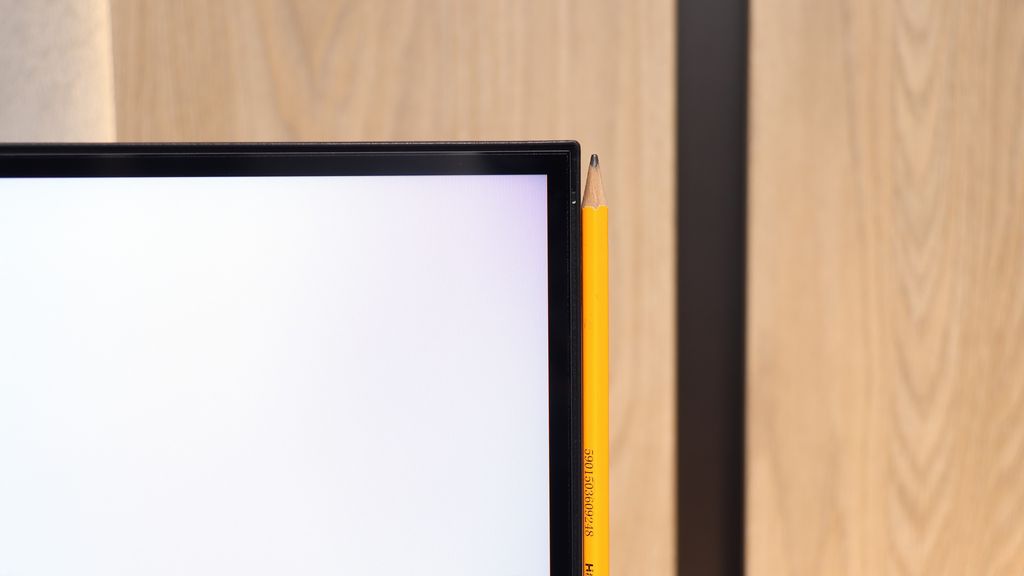
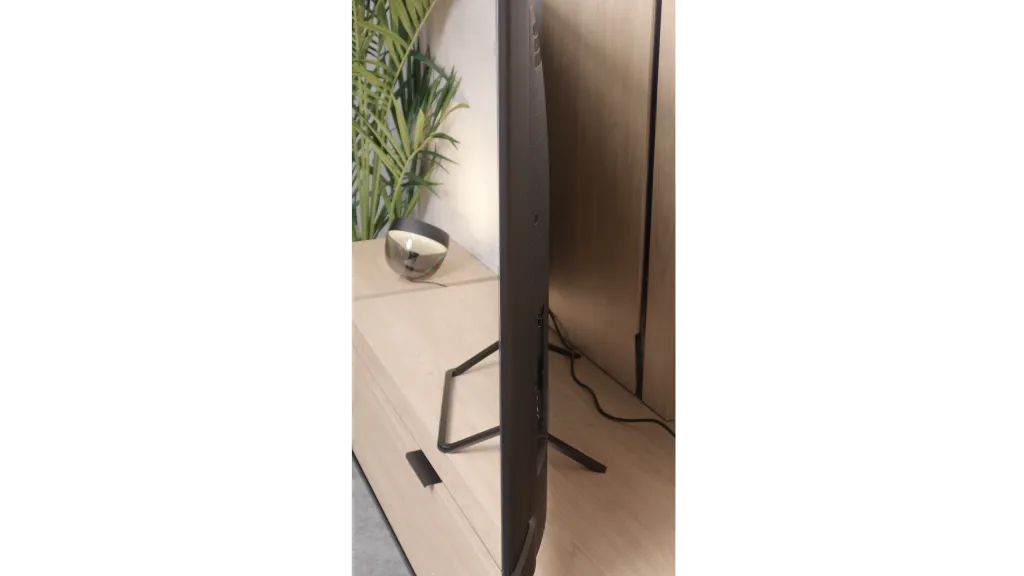
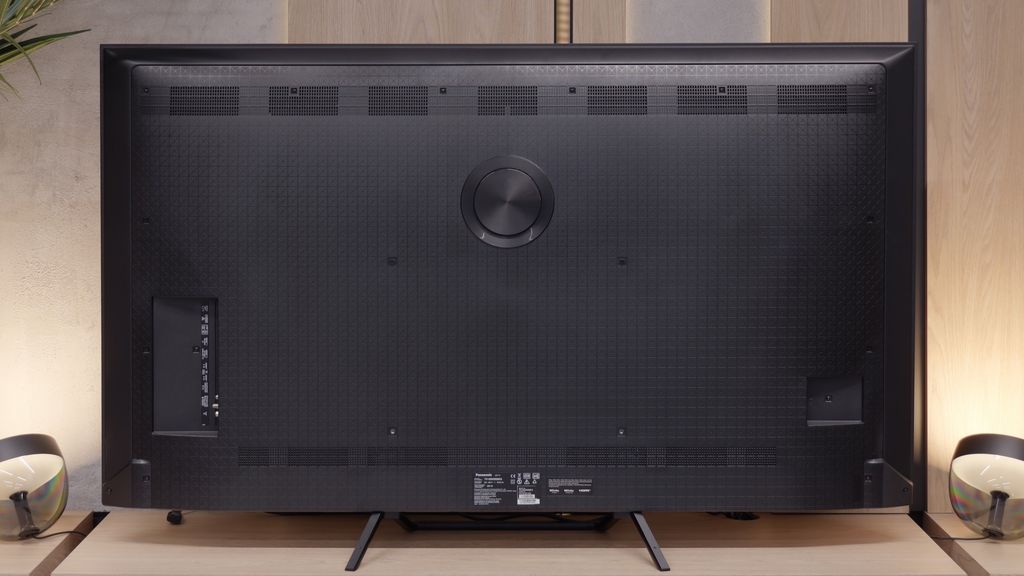
Contrast and black detail
6/10
7.5/10
Local dimming function: No
Local dimming function: Yes, number of zones: 504 (18 x 28)
Contrast:

Result
4,800:1

Result
4,750:1

Result
14,900:1

Result
4,500:1

Result
4,300:1

Result
175,300:1

Result
28,450:1

Result
19,450:1

Result
8,600:1

Result
5,400:1
Halo effect and black detail visibility:
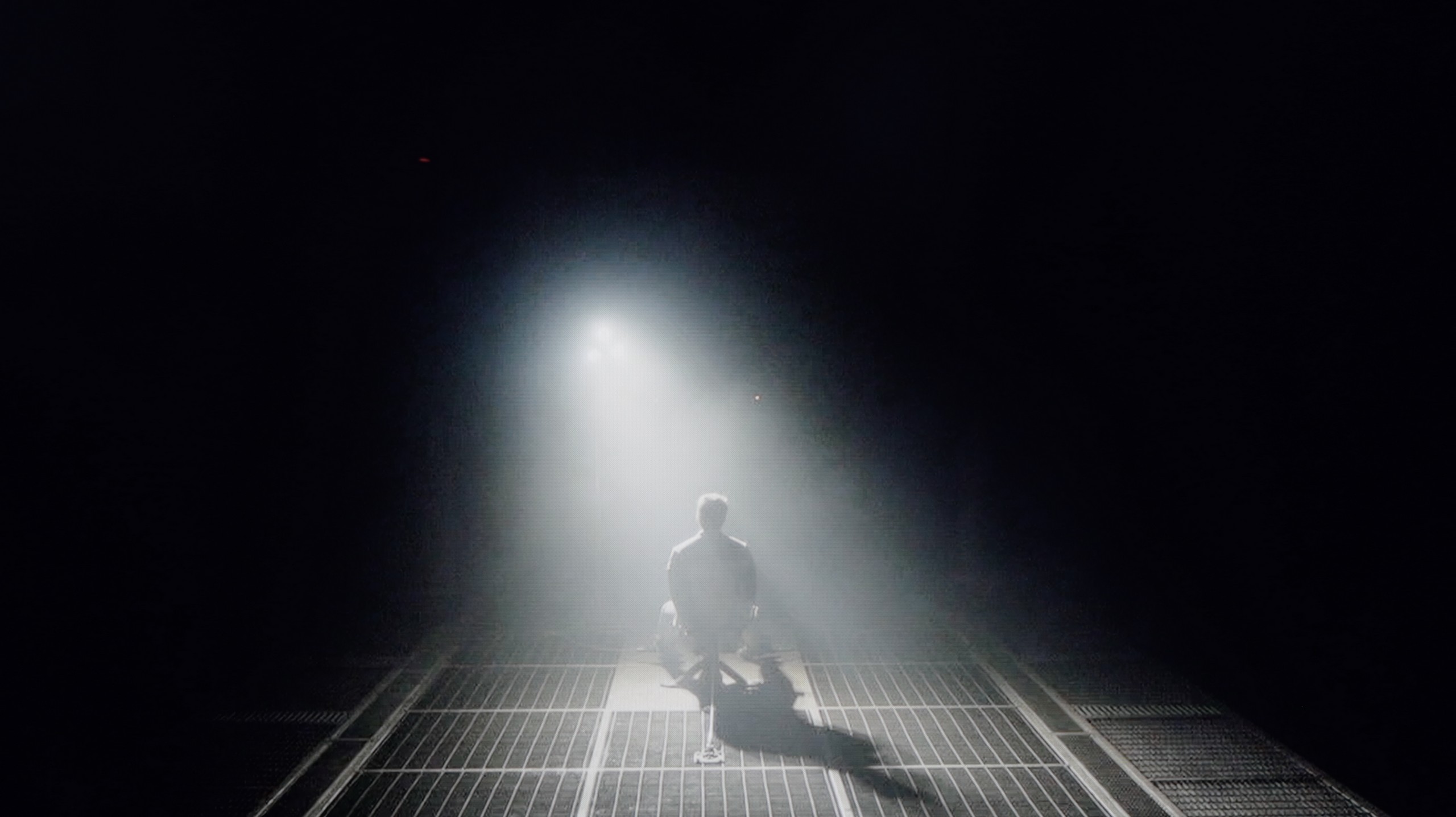
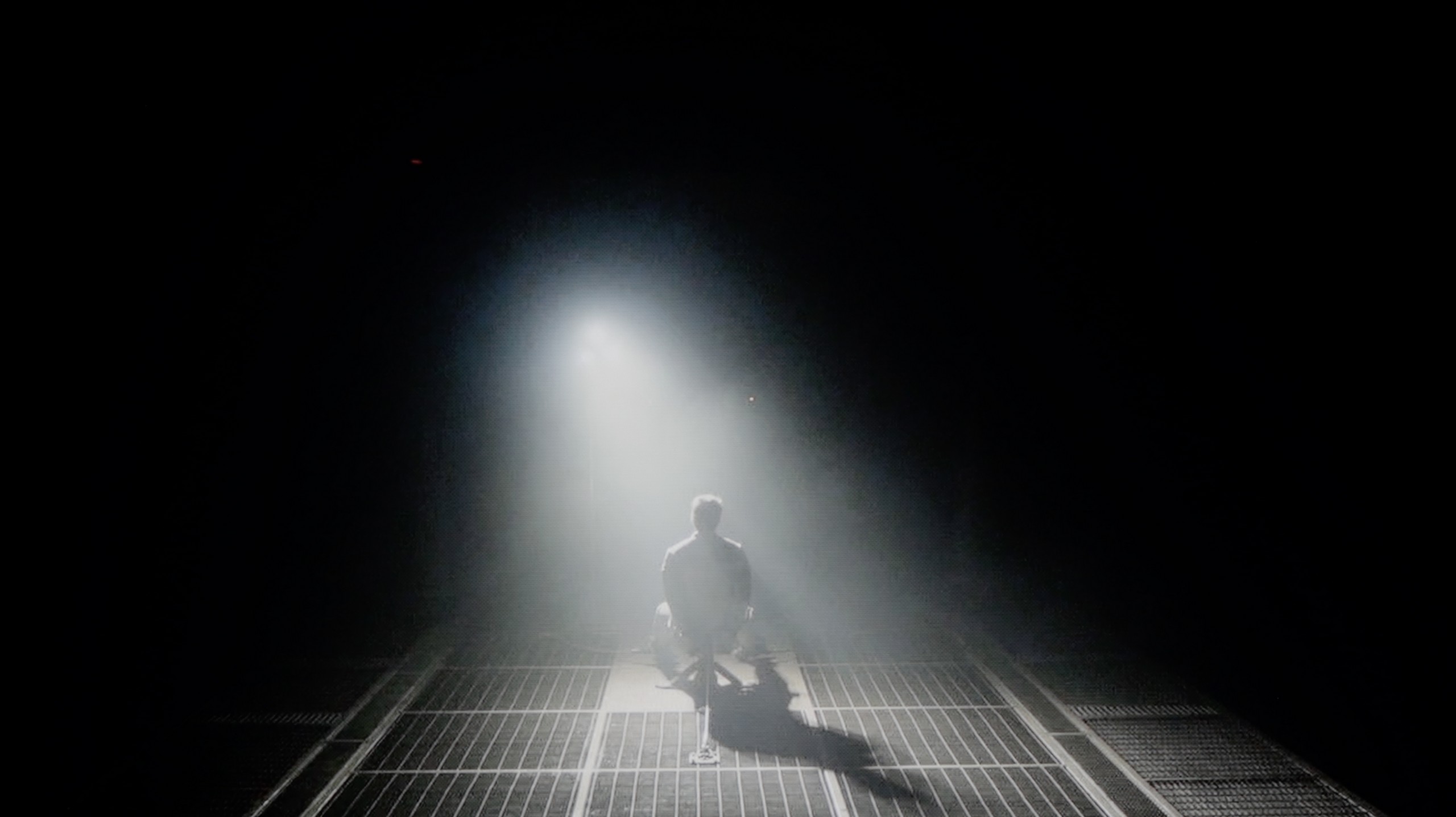
The year 2025 is shaping up to be quite interesting when it comes to lifestyle televisions. Why? Because Samsung has prepared two versions of the iconic model The Frame – one standard and the other with the addition of "Pro". In this review, we take a look at the version without "Pro", which – as we will soon see – makes a significant difference. The standard model LS03F lacks any local dimming technology, unlike its more expensive sibling. This is important as it affects not only the overall picture quality but primarily how this television handles black levels.
The VA panel used in The Frame 2025 has a high native contrast – and this obviously works in its favour. In the tested movie scenes, details in the dark areas of the image were well visible, nothing blended together, and there was no uniform black/light blob. For the average viewer, this will be perfectly sufficient. But of course, not everything is ideal. The lack of local dimming means that the black levels on this television are not perfectly deep – they resemble a dark navy blue rather than pitch black. Additionally, in our tested unit, we noticed slight blooming on the right side of the screen, but this may simply be the "character" of the unit rather than a rule. Theoretically, one could try to improve the perception of black by backlighting the screen – for example, with an LED strip – but in the case of The Frame, that’s rather impossible, as this television is meant to sit flush against the wall like a piece of art. So to achieve better blacks visible to our eyes, we are forced to watch LS03F with the lights on. Such is the charm of this technology.
We tested the 65-inch variant, equipped with as many as 504 local dimming zones. The Panasonic W95B is an LCD television with a VA panel, but the most important feature is the use of Mini LED backlighting with precise zone control. The results we achieved are truly impressive – in easier scenes, the contrast can reach six-digit values, making it at times easy to mistake this screen for an OLED. Of course, this model is not an OLED, and in more demanding sequences, certain limitations related to zone performance are visible; however, it must be said that Panasonic has refined its algorithms to near perfection. Local dimming is practically invisible in action – the image remains consistent, without noticeable defects or the effect of excessive "bleeding" of light. Details in dark areas are preserved, and transitions between brightness and black look exceptionally natural.
HDR effect quality
6/10
5.7/10
Luminance measurements in HDR:

Result
642 nit

Result
589 nit

Result
574 nit

Result
584 nit

Result
631 nit

Result
1145 nit

Result
229 nit

Result
636 nit

Result
198 nit

Result
740 nit
Scene from the movie “Pan” (about 2800 nits)


Scene from the movie “Billy Lynn” (about 1100 nits)


Static HDR10


Dynamic: HDR10+
Dynamic: Dolby Vision


HDR luminance chart:
Panasonic W95B
HDR luminance
Samsung The Frame 2025 (LS03F)
HDR luminance
The Frame LS03F is a television that can surprise with its brightness. The maximum luminance reaches around 650 nits, which already looks solid on paper. But as we know – lab tests are one thing, and real film scenes are quite another story. When watching HDR materials in natural conditions, The Frame 2025 maintains very good results. In most film scenes, peak brightness stayed at around 550–650 nits. This is enough to feel the difference between standard picture and that in HDR quality – bright highlights, reflections on water, or moonlight look distinct and impressive.
It's also worth noting that the LS03F is a QLED television, which translates to solid colour saturation. The coverage of the DCI-P3 colour space reaches about 92%, allowing for vibrant, intense colours in HDR content. It's not at the level of top premium models, but for a lifestyle screen – the result truly deserves recognition.
The Panasonic W95B is truly a bright screen, capable of achieving peak luminance levels of around 1400 nits. In brighter, well-lit movie scenes, this value translates into spectacular HDR effects that can leave a big impression. However, knowing our test setup, you probably see that in very demanding shots – such as the moon in the distance or the lights of a helicopter in a scene from Sicario 2 – the television doesn’t impress. In such situations, brightness drops to around 200 nits, making the HDR effect much less noticeable. This happens because Panasonic focuses on maintaining deep blacks, not illuminating the background – which shouldn’t be a concern for many users. However, it’s important to remember that in such moments, the picture starts to resemble SDR content. The coverage of the colour palette also deserves praise, as it reaches around 93% of the DCI-P3 space thanks to the use of the PFS filter (also known from QLED technology). This means that most films look very good in terms of saturation and colours, maintaining a cinematic quality to the image.
Factory color reproduction
7.1/10
5.1/10

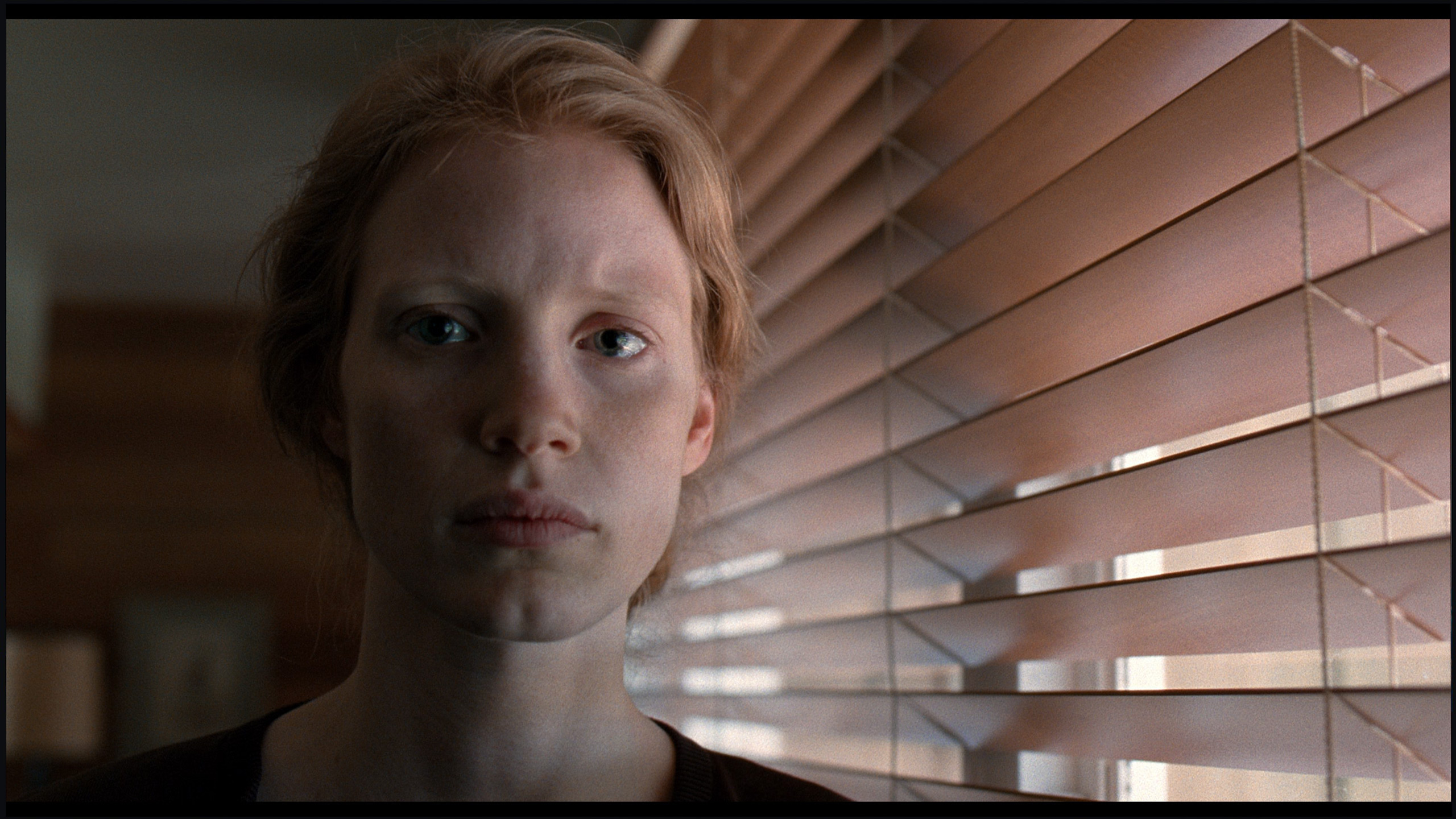
Factory Mode
After calibration


Factory Mode
After calibration
When it comes to picture quality right out of the box, even in Filmmaker mode, which is supposed to be the closest to reference, there were some issues. In both HD and 4K HDR content, we noticed clear deviations in white balance. The picture was heavily skewed towards red and blue, giving the screen a distinctive pinkish hue. This effect was most noticeable in bright scenes – for example, in shots with a lot of white, where neutral light should naturally dominate. In such moments, the screen clearly took on pink tones, which is also evident in the attached comparative photo. As for brightness characteristics – it wasn't as bad as one might expect given such colour inaccuracies. Analysis of the gamma curve and EOTF showed a slight brightening of the image compared to the reference, but not enough to drastically spoil the viewing experience.
In Filmmaker mode, the Panasonic W95B offers an image with quite accurate colour reproduction, although it is not without minor imperfections. The white balance slightly leans towards red, which can cause a subtle warm tint to the image, and the gamma curve is slightly elevated, making the screen appear a bit brighter. It's good that the manufacturer has included this mode – even in its factory configuration, it provides a fairly natural look for films. However, knowing how susceptible Panasonic televisions are to calibration, we decided to check how much the image could be improved after professional tuning.
Color reproduction after calibration
8/10
9.1/10




After calibration, the movie mode gained a completely new quality. The issue of the pink tint, which was previously clearly visible, especially in bright scenes, has been effectively eliminated. Colours started to look significantly more natural, and the white balance no longer dominated the rest of the image. It was no longer the same oversaturated "picture from a box" – everything took on coherence and a cinematic character. Additionally, the tendency of the TV to slightly brighten scenes, previously visible in the EOTF curve analysis, has been partially corrected. Of course, within the limits of what the design allows without local dimming – it's difficult to speak of perfect brightness management here. Nevertheless, the final effect was definitely closer to what one might expect from a mode named Filmmaker.
After professional calibration, the Panasonic W95B shows what it’s really capable of. Colour errors have mostly dropped below values of 2–3, making them practically invisible to the human eye. The excess red in the white balance has also been corrected, which means the image is no longer slightly tinted pink, and details in dark areas no longer get lost due to excessive dimming in the gamma. The improvement in HDR content is also noticeable – colour saturation is now more stable and doesn’t lean towards blue as distinctly as it did before. It’s truly a fantastic television for watching movies and series in the highest possible quality. While we know that Mini LED screens are not always perfectly suited for this, the W95B is a prime example that with proper tuning, a result close to OLEDs can be achieved.
Smoothness of tonal transitions
9/10
9.5/10












In terms of the smoothness of tonal transitions, the LS03F maintains a high standard – just like last year's models. The television didn’t have any issues during testing of more challenging film scenes, where visible transitions between shades can easily occur. The colour gradation performs very well here – both in lighter and darker parts of the image. We did not observe the typical banding effect or any other disturbances that could be noticeable while watching films. If we were to nitpick, in the most demanding scenes – with subtle transitions and delicate gradients – minor imperfections can be seen. But only if you get really close to the screen and start analysing the image from an unintended distance.
In terms of tonal transition fluidity, the Panasonic W95B performs exceptionally well. In the vast majority of scenes, the gradation is practically unnoticeable, which makes the image look exceptionally smooth and natural. Minimal issues only arise in extreme shades of grey, which occur extremely rarely and are difficult to catch with the naked eye. This is a level that will satisfy even the most demanding users.
Image scaling and smoothness of tonal transitions
6.7/10
7.8/10
Smooth transition function
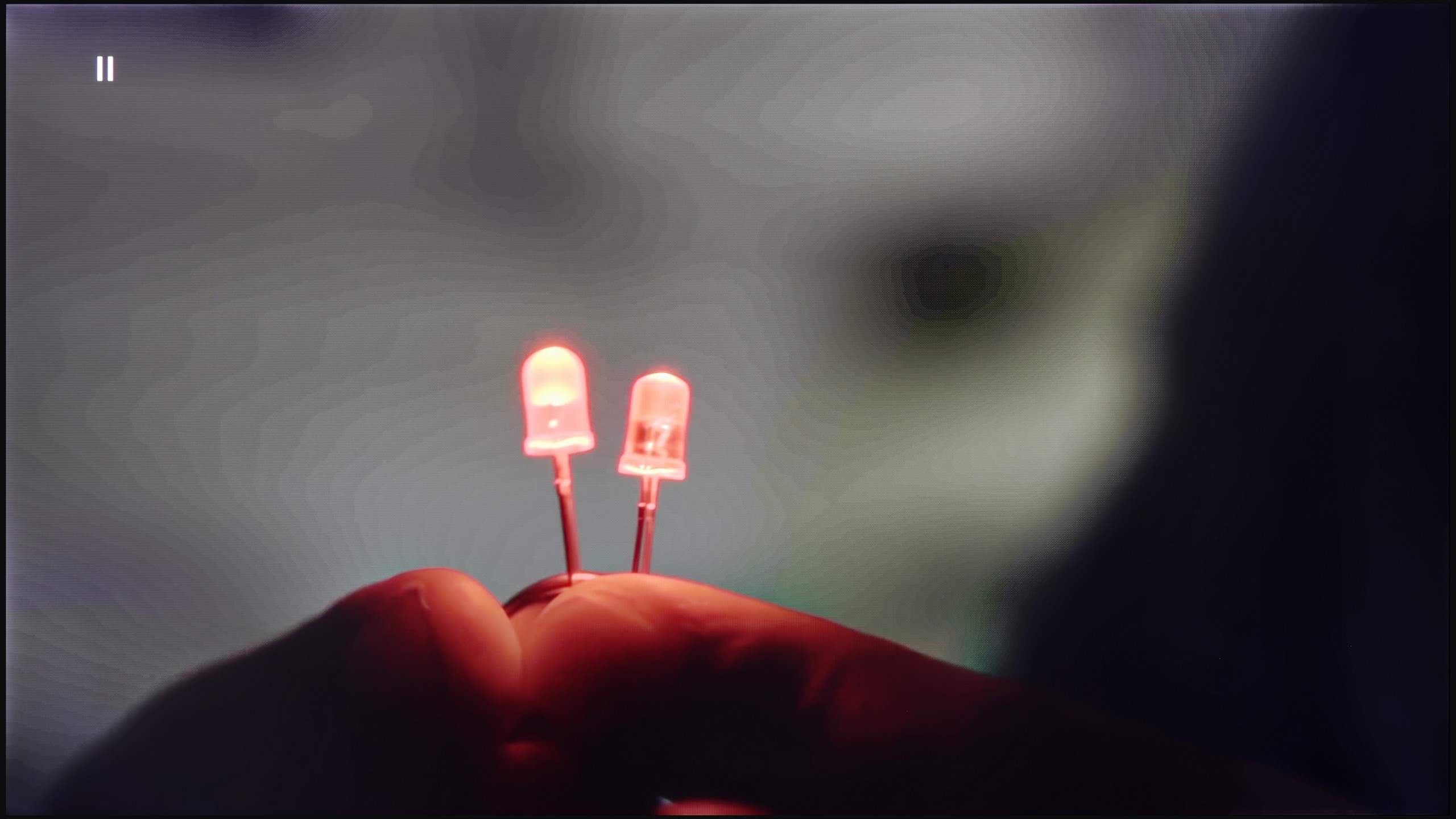

Image without overscan on the SD signal


LS03F is equipped with an NQ4 processor, which is responsible for improving image quality – especially in lower-quality materials. In practice, it works surprisingly well, particularly when it comes to older content and recordings with lower resolution. Activating the "noise reduction" feature delivers noticeable results. The television effectively smooths tonal transitions and removes digital noise that can appear in darker areas of the image. Compared to previous generations, there is a clear improvement – earlier, this feature often smoothed everything too much, including details that it shouldn't have removed. In this year’s model, the smoothing still occurs, but it happens in a much more acceptable way. Textures of materials, skin, or fabric details are not as heavily muted as before – the image retains more naturalness. However, this does not change the fact that film grain is still removed by the television, which may not appeal to everyone. On the other hand, it's no longer such an aggressive intervention as in previous models. It's also worth mentioning that the LS03F may struggle with very weak signals – for example, from VHS tapes or low-resolution video. In such cases, we noticed slight clipping of the image at the edges – the so-called overscan. This can lead to situations where a small part of the image (e.g., subtitles at the bottom edge) gets cut off.
In terms of image processing, the Panasonic W95B performs exceptionally well. The proprietary processor responsible for digital image processing effectively upscales lower resolution content to 4K, maintaining a high level of detail and a natural look to contours. The end result is impressive – the upscaling is truly top-notch, and Full HD content can look surprisingly good. Also noteworthy is how the TV smooths tonal transitions in low-quality materials. The algorithm doesn’t operate as aggressively as in some competing models, which helps avoid the loss of detail or the blurring of film grain.
Blur and motion smoothness
6.9/10
7.8/10

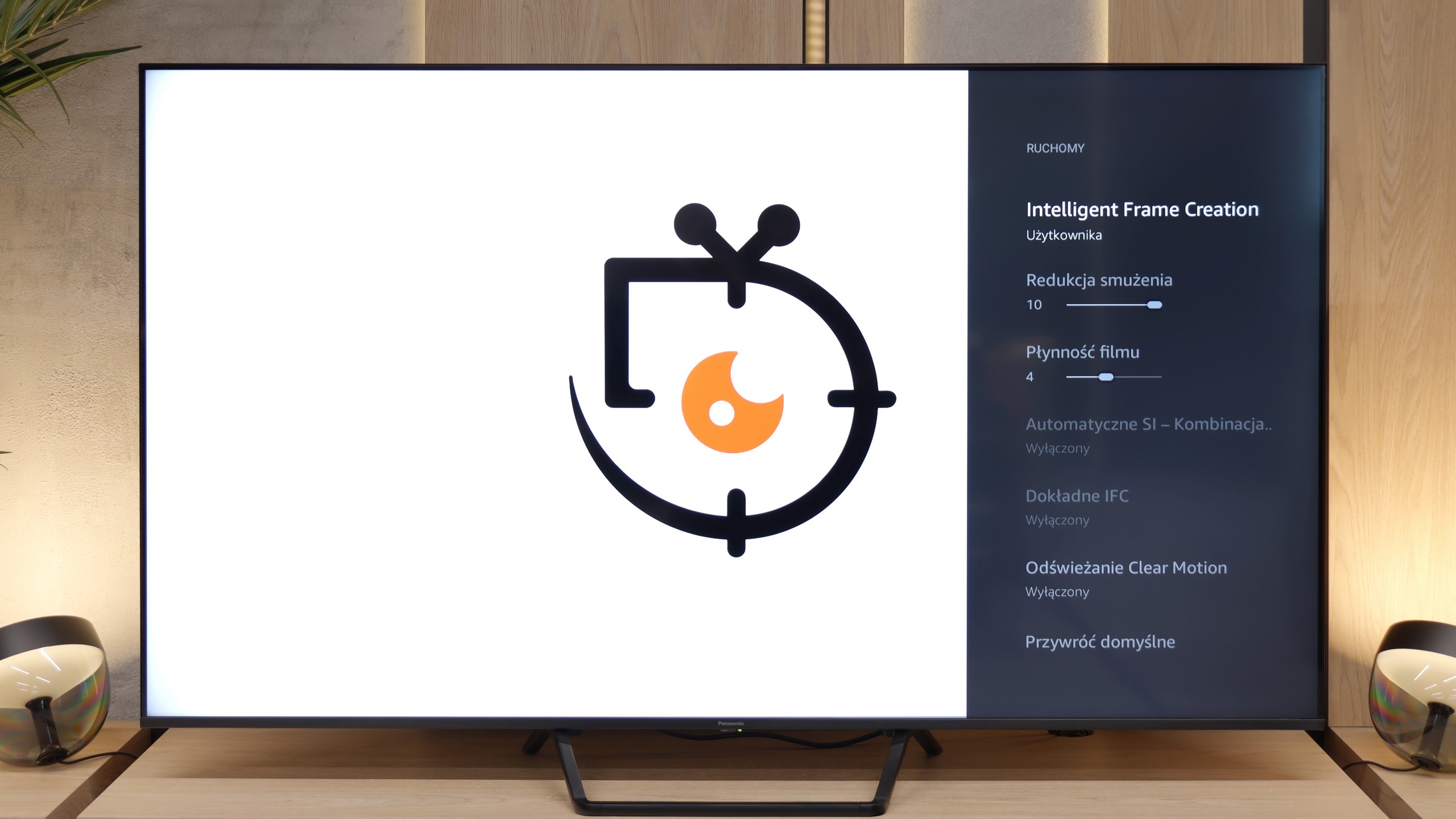
Blur (native resolution, maximum refresh rate):






Blur (BFI function enabled):
Image flickers in this mode






Blur ():
Blur (4K@144Hz):



The new feature in The Frame for 2025 is a 144 Hz refresh rate display. Yes – in a television primarily associated with displaying works of art, you can now not only watch Van Gogh, but also comfortably play on a console or follow fast-paced sporting events. This is a significant step towards greater versatility. In the case of Samsung movies, as usual in models with a 120 Hz display and above, it allows you to adjust motion fluidity according to your preferences. You can set a more cinematic reproduction that maintains frame rate or opt for complete image smoothing. The range of options is broad, allowing you to tailor the effect to your tastes – regardless of whether the screening is meant to look like classic cinema or a performance on a modern theatre panel.
*this part of the test refers to the model LS03FAU in sizes 55 and 65 inches, which is equipped with a 144Hz display; the sizes 43 and 50 inches have 60Hz displays, and consequently perform much worse in terms of motion fluidity.
The 144 Hz panel used in the Panasonic W95B offers excellent smoothness, although in practice, given how television content looks or how new-generation consoles are limited, it’s worth looking at its performance when refreshing at 120 Hz. In this mode, the television performs exceptionally well – despite being a VA panel, which is not known for the fastest pixel response times, motion blur is minimal and difficult to detect with the naked eye.
Console compatibility and gaming features
8.2/10
9.8/10
- ALLM
- VRR
- VRR range48 - 144Hz48 - 144Hz
- Dolby Vision Game Mode
- Correct implementation of HGIG
- 1080p@120Hz
- 1440p@120Hz
- 4K@120Hz
- Game bar
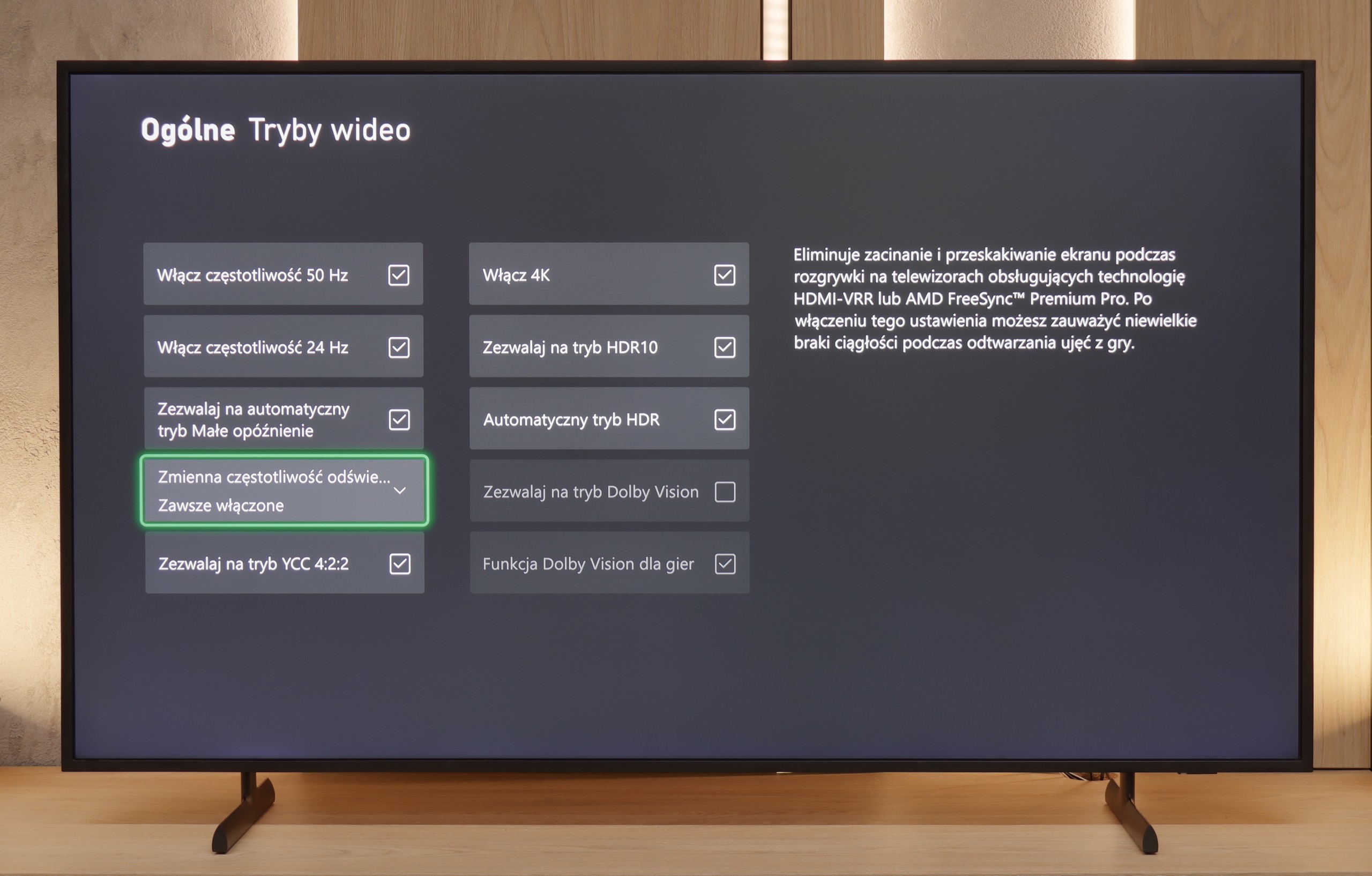
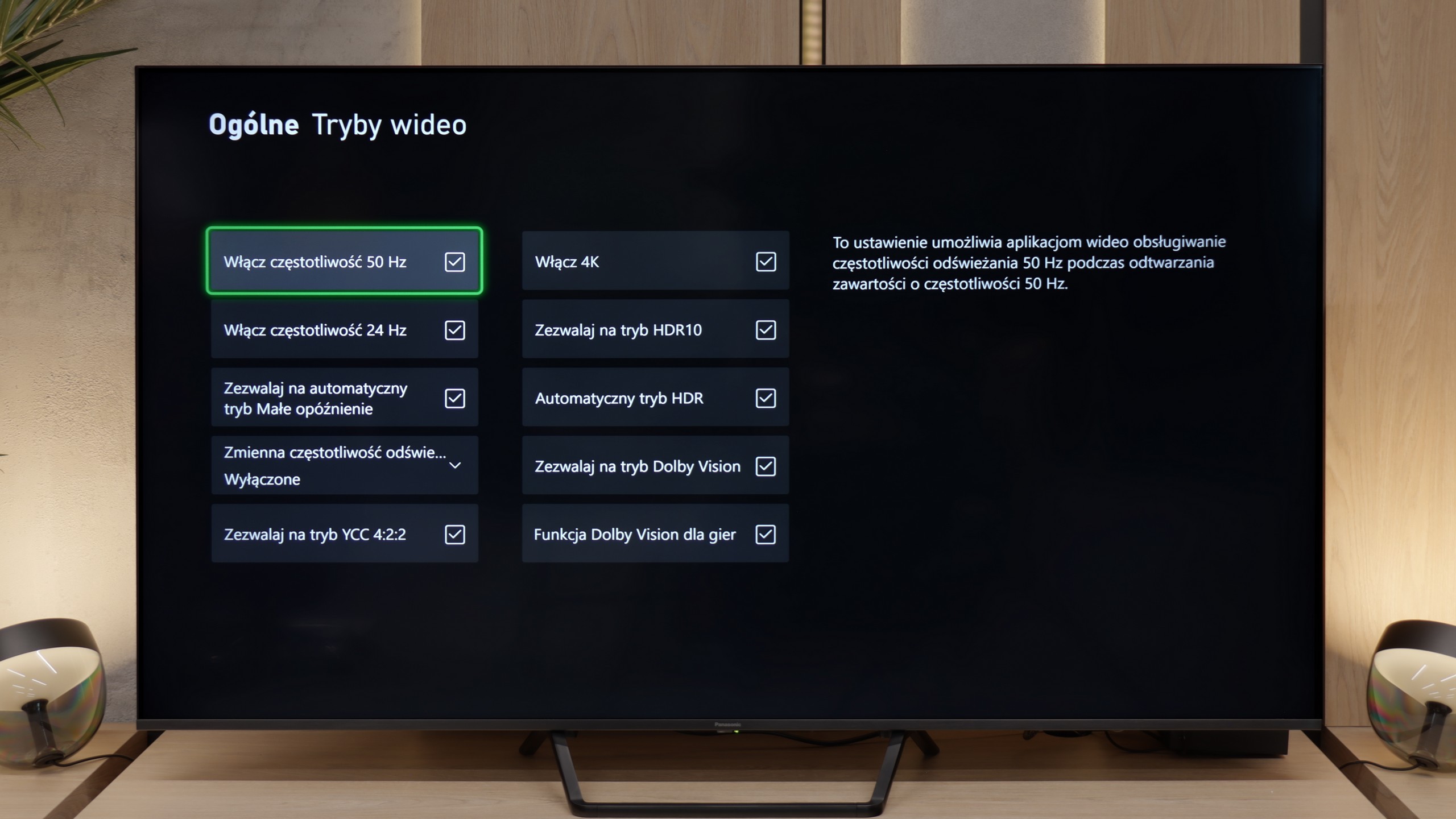
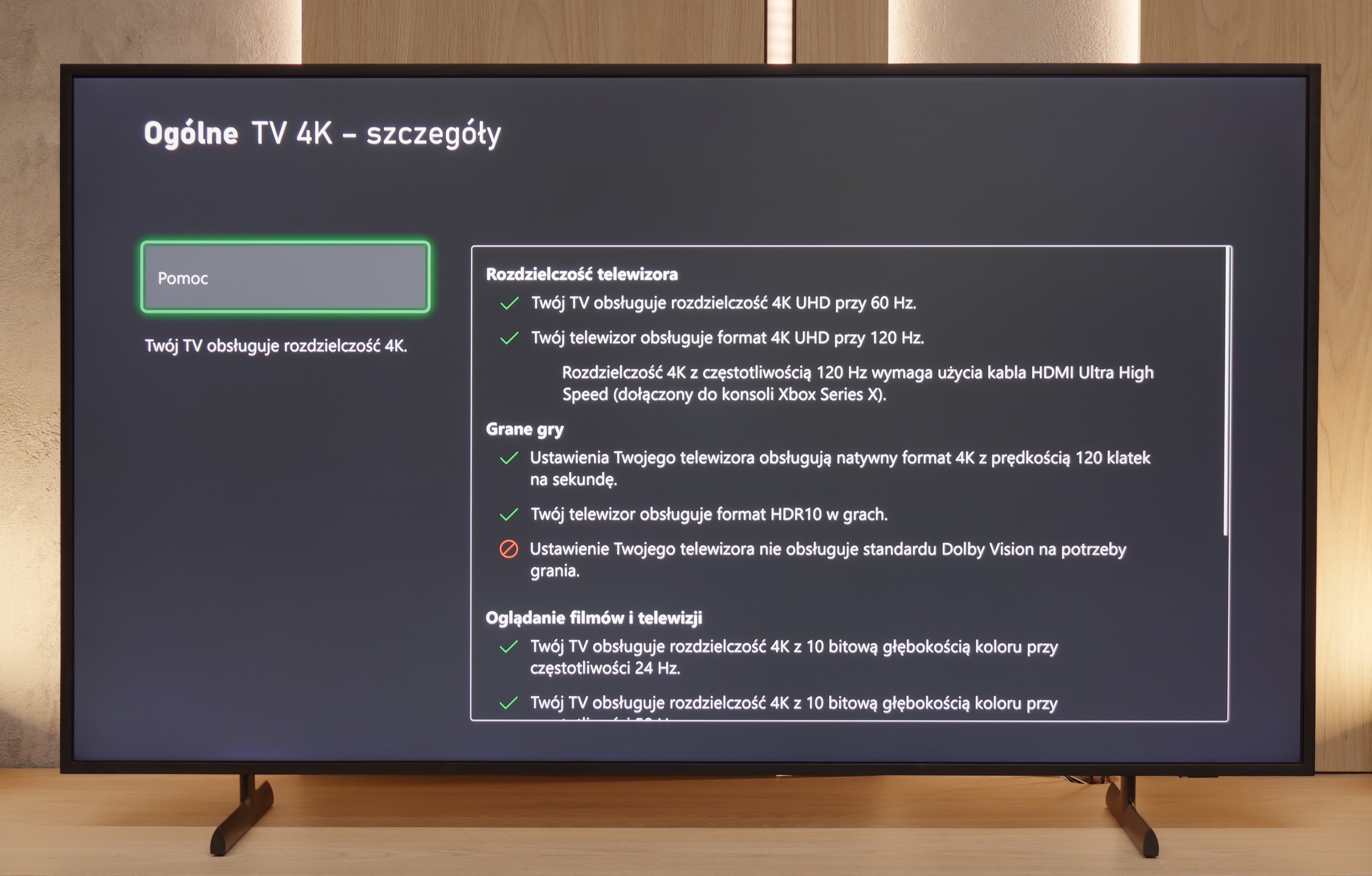
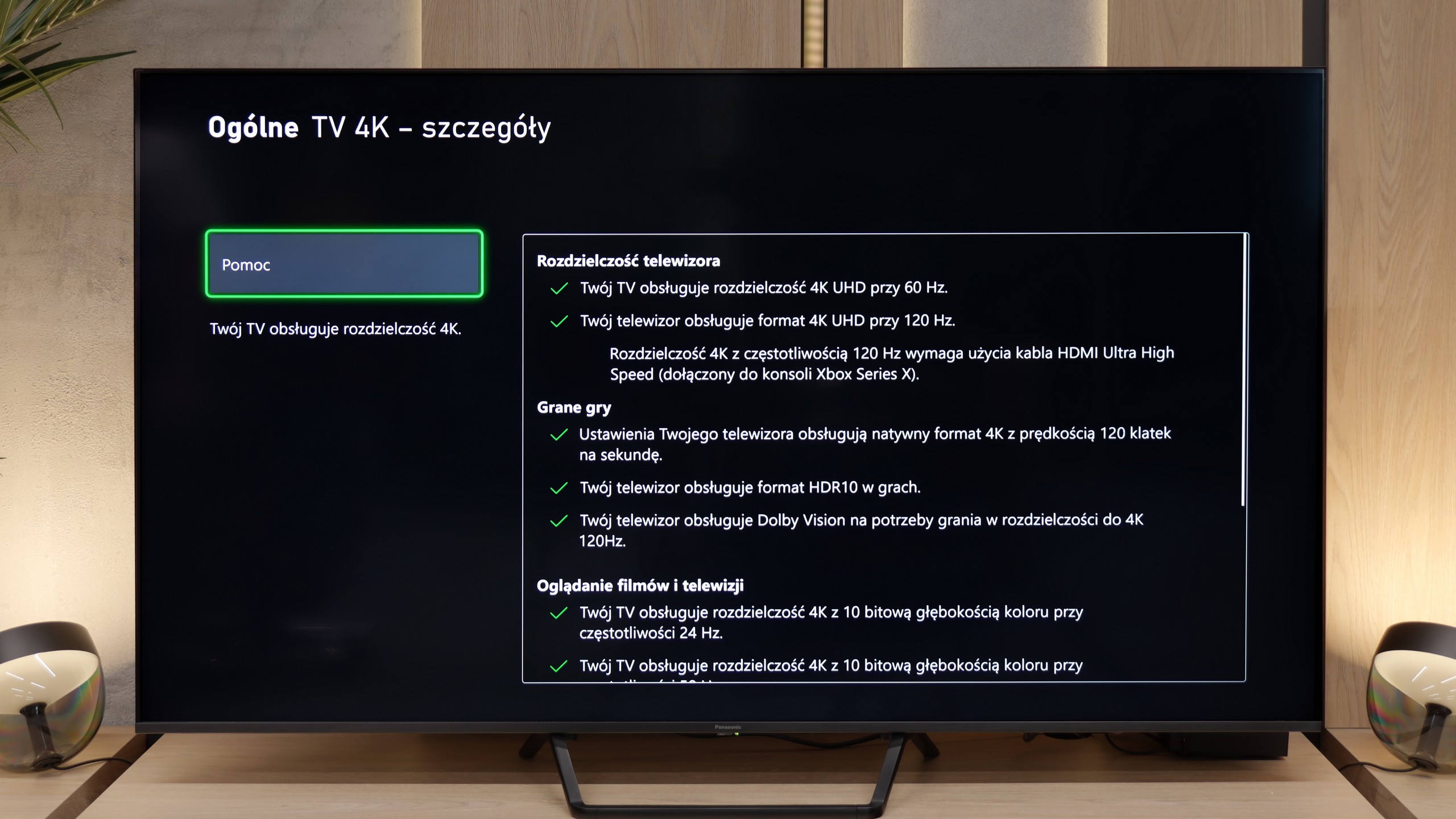
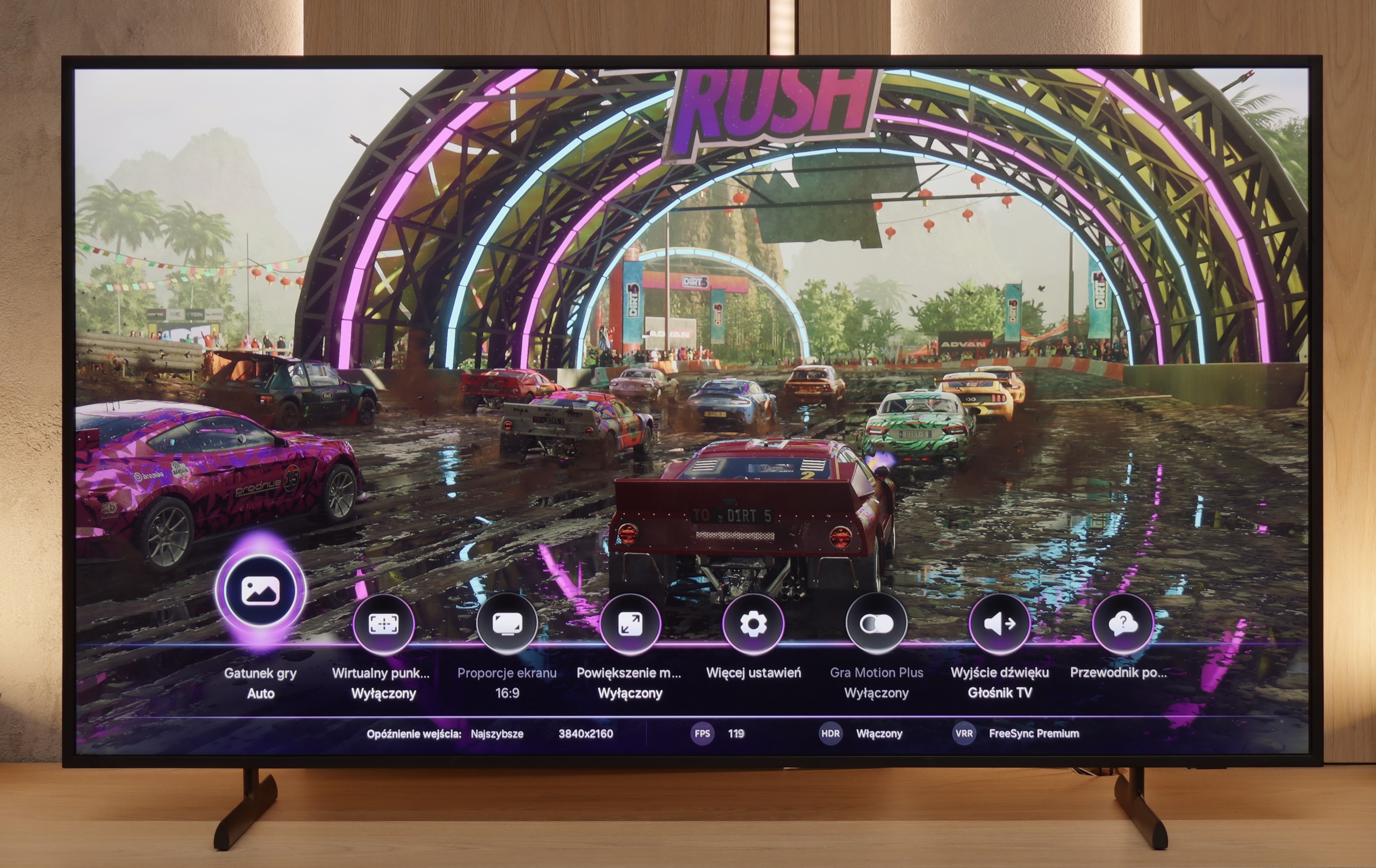
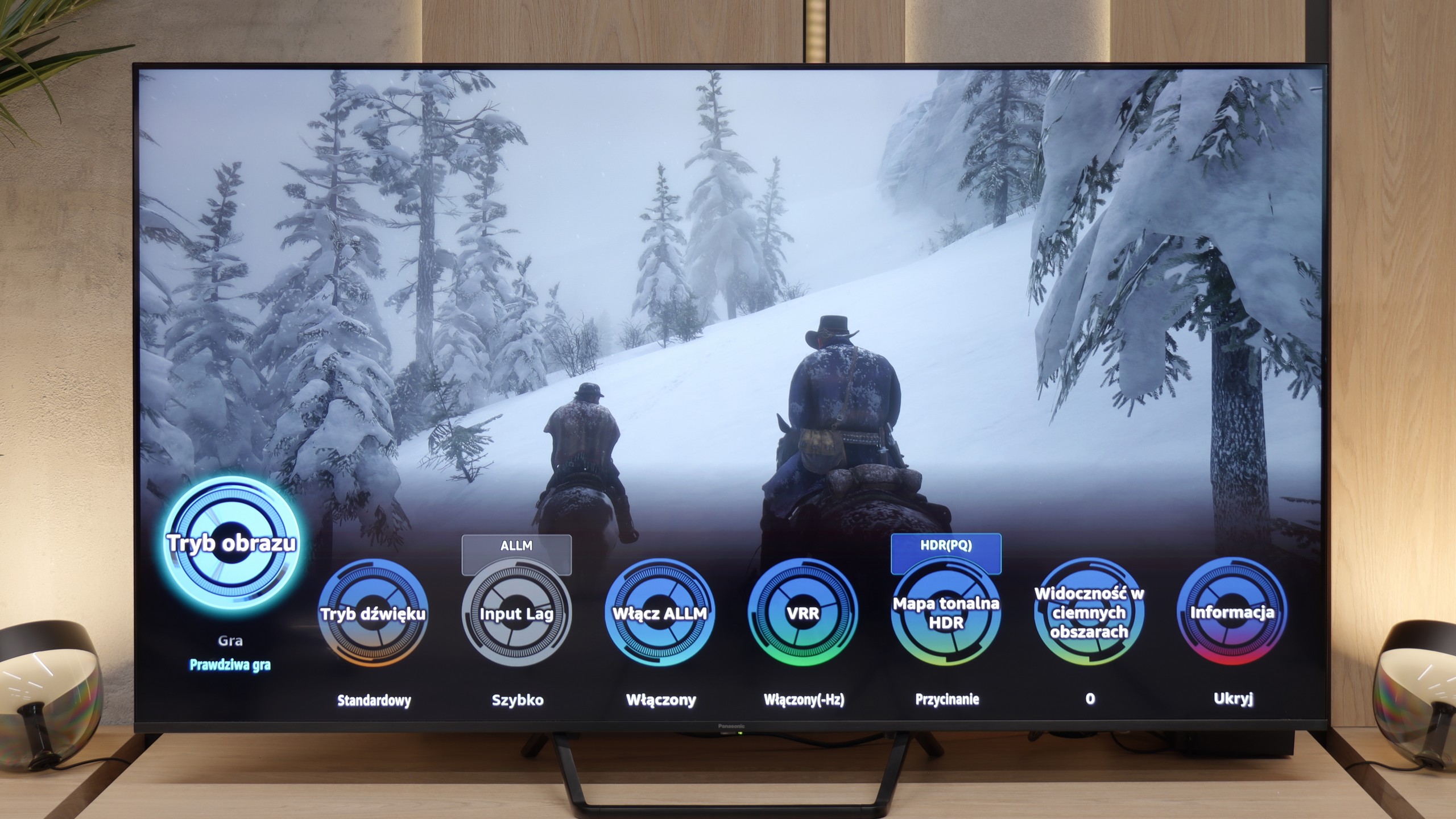

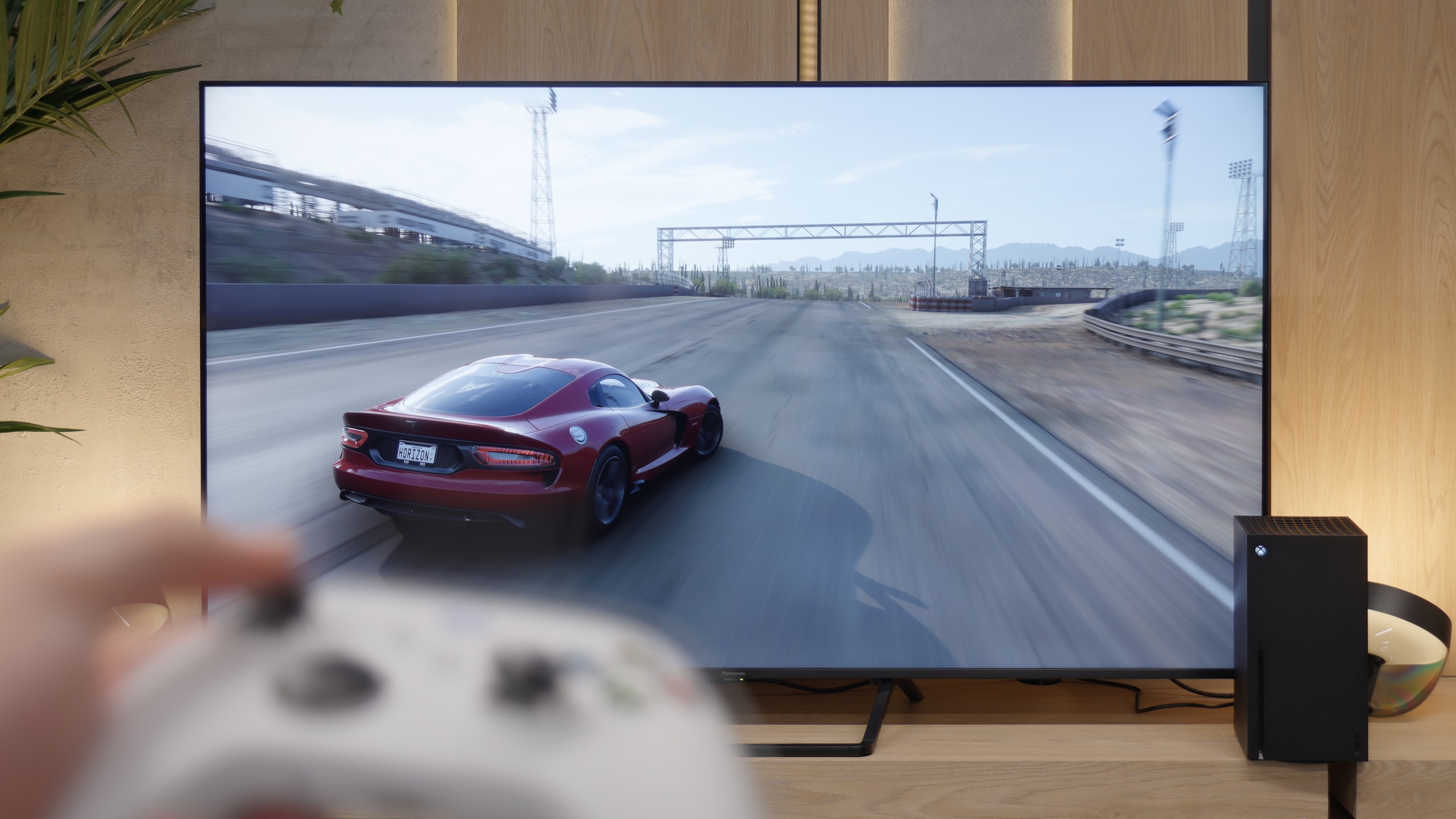
As we mentioned earlier – although The Frame likely displays images and artwork for most of the time, Samsung recognised that a Van Gogh fan could just as easily be an avid gamer. And it must be said that The Frame 2025 has almost everything to become a fully-fledged gaming TV.
Onboard, we find support for ALLM (Auto Low Latency Mode) and Variable Refresh Rate (VRR) thanks to the implementation of a single HDMI 2.1 port. The TV handles lower resolutions at higher refresh rates effortlessly and features an expanded Game Bar – already known from other Samsung models – which allows for quick preview and adjustment of key gaming-related settings. For this, it gets extra points from us. Noteworthy is also the proprietary motion smoother, Auto Motion Plus Game, which – and this is worth emphasising – works without increasing input lag. Samsung remains the only manufacturer that has managed to implement this feature in a practically unnoticeable way regarding delays. The result? Much better fluidity in games, especially those that struggle to maintain a stable 60 frames. This solution can genuinely improve gaming comfort in more demanding titles – particularly on consoles that don’t always manage full fluidity, especially in AAA games.
As for the downsides – the lack of Dolby Vision is already something we consider standard in Samsung TVs, so there’s not much to specifically nitpick here. However, the problem lies elsewhere. In the latest version of the Tizen system, the HGiG option has disappeared. Literally – it’s gone. This is a significant inconvenience when configuring the console for proper HDR content display in games. It's hard to understand why such a decision was made, but one thing is certain – this needs to be fixed as soon as possible. We’re talking about a brand that has set standards for gaming on TVs for years. If HGiG returns – and we hope it does – The Frame LS03F can confidently aspire to be a proper gaming TV. Not only as a decoration on the wall, but as equipment that truly enhances the gaming experience.
Aside from the previously mentioned issue related to VRR mode, where local dimming does not work, the Panasonic W95B is a true gaming beast. The TV offers practically everything that gamers could expect – perhaps apart from four HDMI 2.1 ports, as there are only two available. On board, we find automatic low latency mode (ALLM), correctly implemented HDR modes for gamers, including HGiG, as well as support for Dolby Vision in games. The whole package is complemented by an interestingly designed Game Bar, presented in the form of circles. It may not be the most visually attractive, but it fulfills its purpose – allowing quick access to key game parameters and adjusting settings without diving into the system menu.
Input lag
10/10
9.8/10
SDR
HDR
Dolby Vision
When it comes to input lag, Samsung maintains a very high standard. The LS03F, like most of this year's models from the brand, achieves a score of 8 ms for 4K content, which is practically a benchmark value. This result allows you to play even the most dynamic titles without delays and with complete responsiveness. Well done!
Panasonic W95B offers very low input lag – around 11 ms at 120 Hz content and 20 ms at 60 Hz. While these aren't record-breaking results that would impress the most demanding esports players on paper, in practice the difference is virtually imperceptible. During testing, even in dynamic, fast-paced titles we didn’t notice any response delays. The TV responds instantly, and gameplay remains smooth and comfortable. This level is more than sufficient for both console gaming and more demanding online productions.
Compatibility with PC
8.2/10
8.4/10
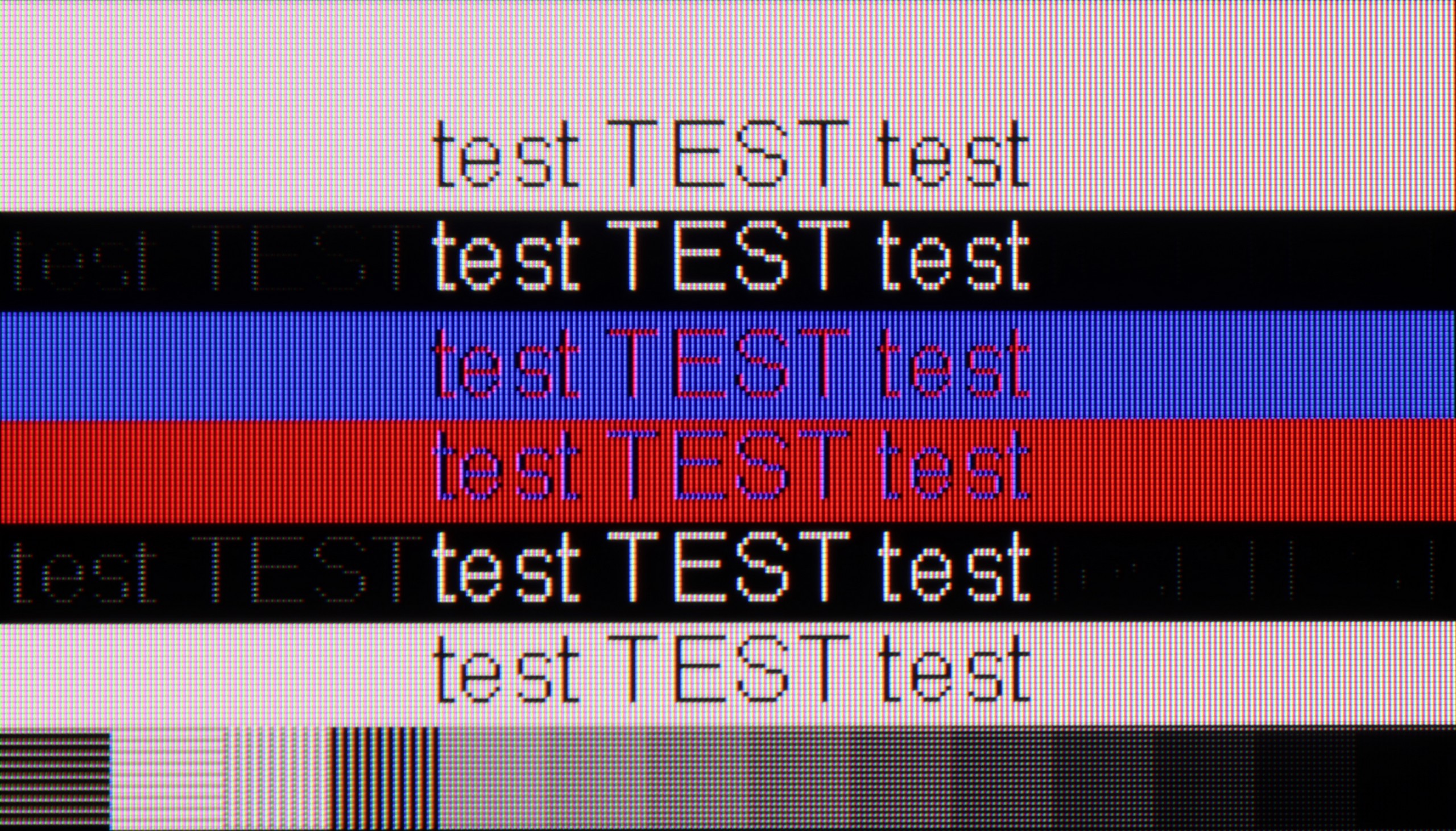
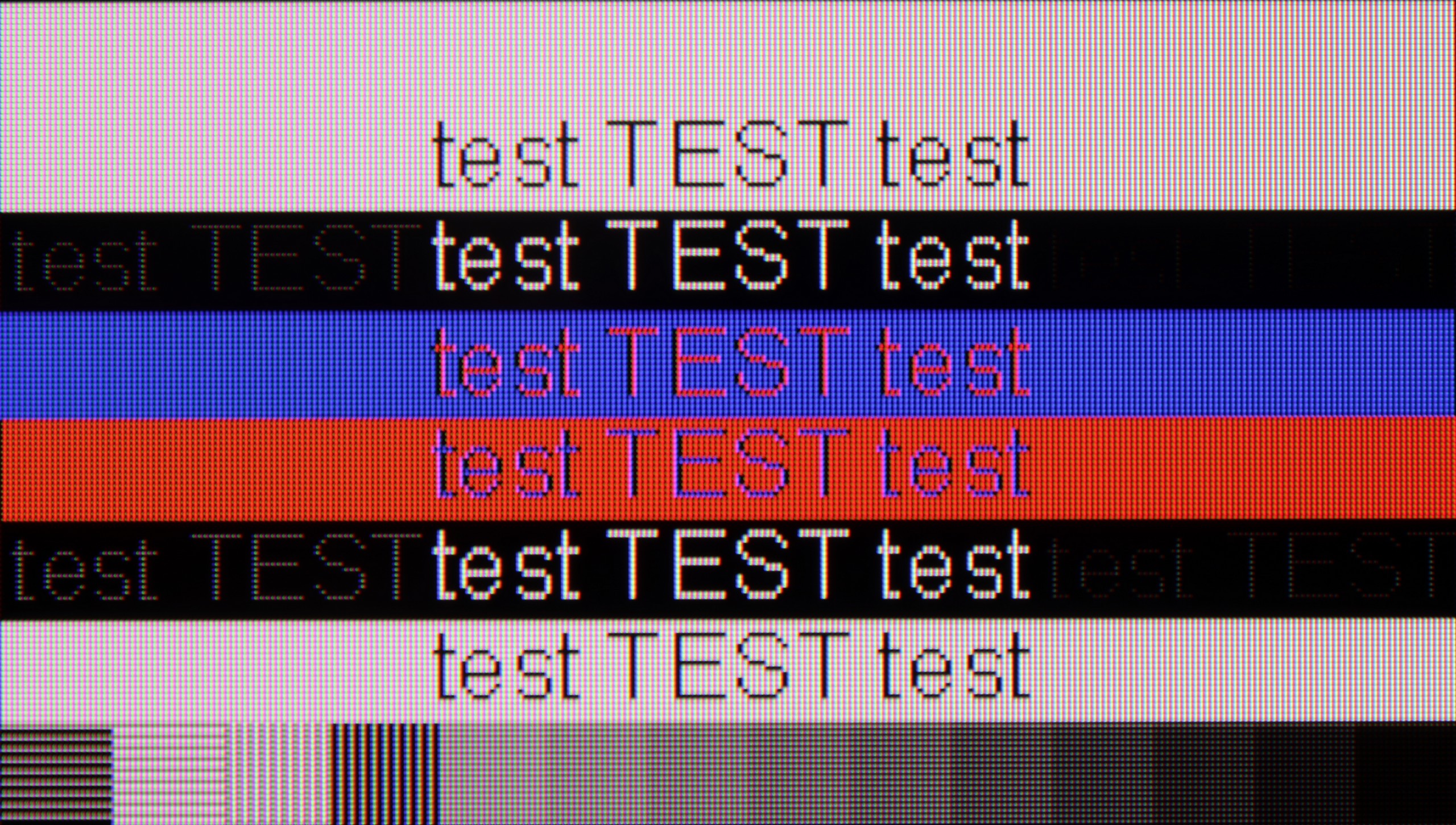
Collaboration of The Frame 2025 with a computer poses no major issues. Let's start with gaming, as this is where this model shows its strengths – support for 144 Hz signal, low input lag, and compatibility with G-Sync technology (for NVIDIA cards) make it hard not to consider it a full-fledged gaming monitor. It’s one of the more interesting "gaming with PC" televisions available on the market in this class.
When it comes to everyday work, the situation looks just as good. The Frame easily handles chroma 4:4:4, which translates to good font readability and overall user comfort. We only noticed slight issues with dimming very thin lines and dark details on a light background – this effect may occur, particularly when working with small interface elements. In practice, however, with a 55-inch screen and standard office working distances, it will be hard to realistically notice this problem. Nonetheless, it's worth keeping this in mind if the television is to serve as a monitor not only for entertainment but also for precise graphic or text work.
The Panasonic W95B performs very well when connected to a computer. With its gaming monitor featuring a 144 Hz refresh rate and support for G-Sync and AMD FreeSync, the screen delivers smooth visuals without frame tearing, which will be appreciated not only by gamers but also by those using the TV as a large monitor. It can also be comfortably used for daily work – fonts are legible, and the image is sharp. While they may not be as clear as those from IPS panels, the display quality for text will be fully satisfactory for most users.
Viewing angles
3.5/10
2.9/10
As one could expect from a VA panel, the viewing angles on The Frame 2025 are at best mediocre. The image loses saturation and contrast when viewed off-axis. It's a shame, because we're talking about a model that displays digital artworks in standby mode – and it's precisely in such moments that wide viewing angles would make the most sense, enhancing the feeling of interacting with a real piece of art rather than just its screen imitation.
Perhaps in the future, manufacturers will decide to introduce special coatings or modified versions of VA panels that improve this aspect – as it would have real significance not only in terms of functionality but also aesthetics for lifestyle televisions.
Unfortunately, this is the Achilles heel of the Panasonic W95B model – as with most TVs equipped with a VA panel without additional coatings to widen viewing angles. Colours start to fade with even a slight deviation from the screen axis, and the contrast noticeably drops. For this reason, when watching, it’s best to sit directly in front of the television to fully utilise the image's potential.
Daytime performance
6.3/10
7.2/10

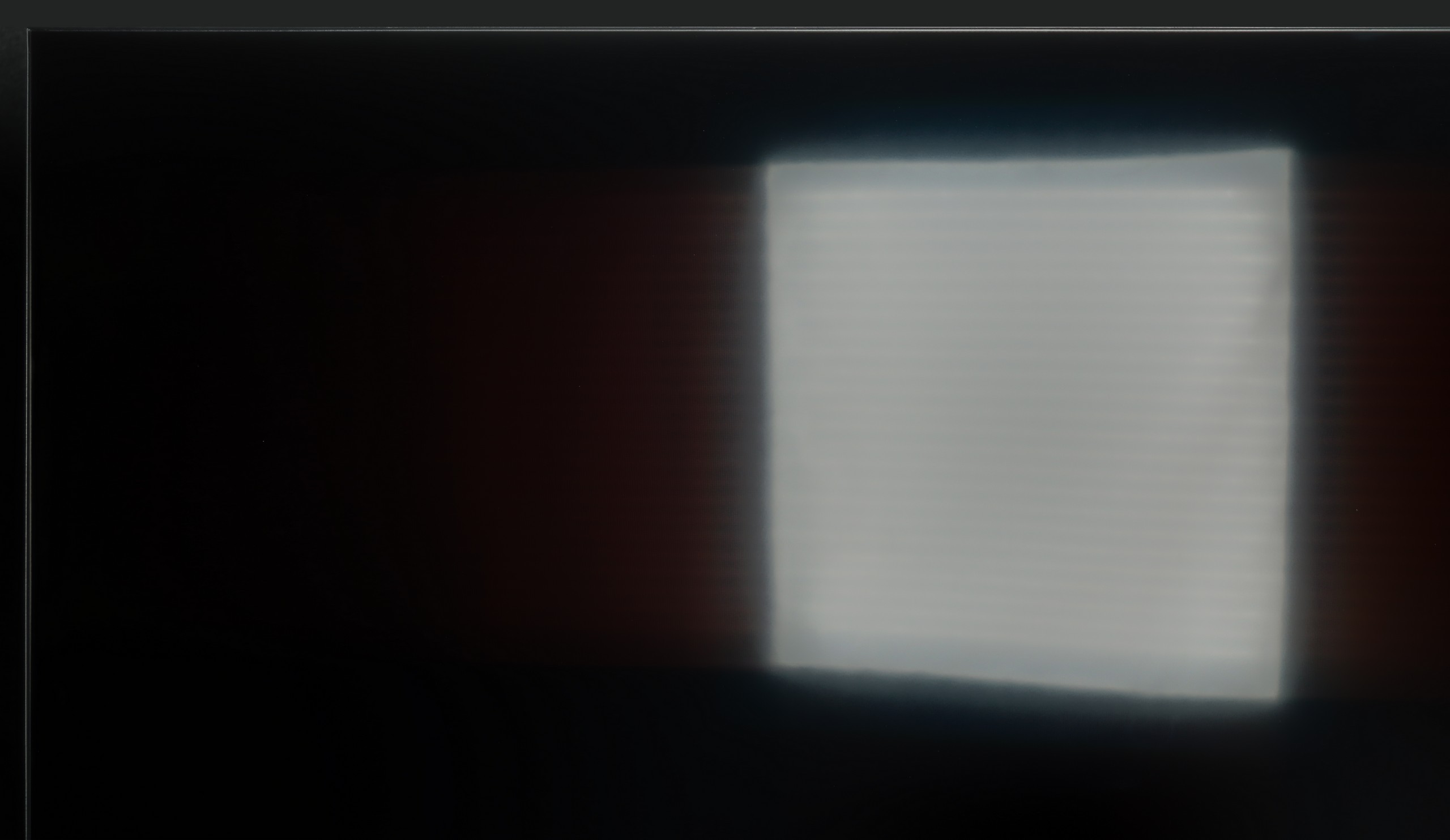


Panel brightness
Average luminance SDR
Panasonic W95B: 673 cd/m2
Samsung The Frame 2025 (LS03F): 596 cd/m2
One of the most distinctive features of The Frame is its matte display – and it must be said that Samsung has really perfected this aspect. From our experience, it's one of the best solutions for reducing reflections, especially direct ones. If reflections on the screen can be irritating, it will be hard to find a better screen in this budget than the matte panel used in Samsung TVs. Of course, this comes with a certain compromise. In very bright sunlight, colours may appear slightly faded, and the image loses a bit of depth. However, this is something we consciously accept when opting for a matte screen – you win some, you lose some. In practice, the colours and contrast on Samsung's matte screen still outperform those on Chinese models such as TCL NXT Vision or Hisense Canvas TV. If effective reduction of reflections is a priority and you want to use the TV also as a “digital artwork” in bright rooms, it’s hard to make a better choice.
The Frame achieves around 600 nits of brightness, which, combined with the matte coating, ensures that the TV performs well in well-lit daytime conditions. It may not be at the level of flagship models, but in everyday use – in a living room with plenty of light – it handles it without any problems.
The satin coating applied in the Panasonic W95B effectively reduces light reflections, ensuring that the screen remains readable even in brightly lit rooms. However, the greatest advantage of this model is its high brightness – when watching everyday content, it reaches around 700 nits, which is more than sufficient even in very demanding daylight conditions. The television performs excellently in living rooms with large windows or when watching on a sunny day, maintaining appropriate contrast and colour saturation without sacrificing visual comfort.
Panel details
Subpixel Structure:
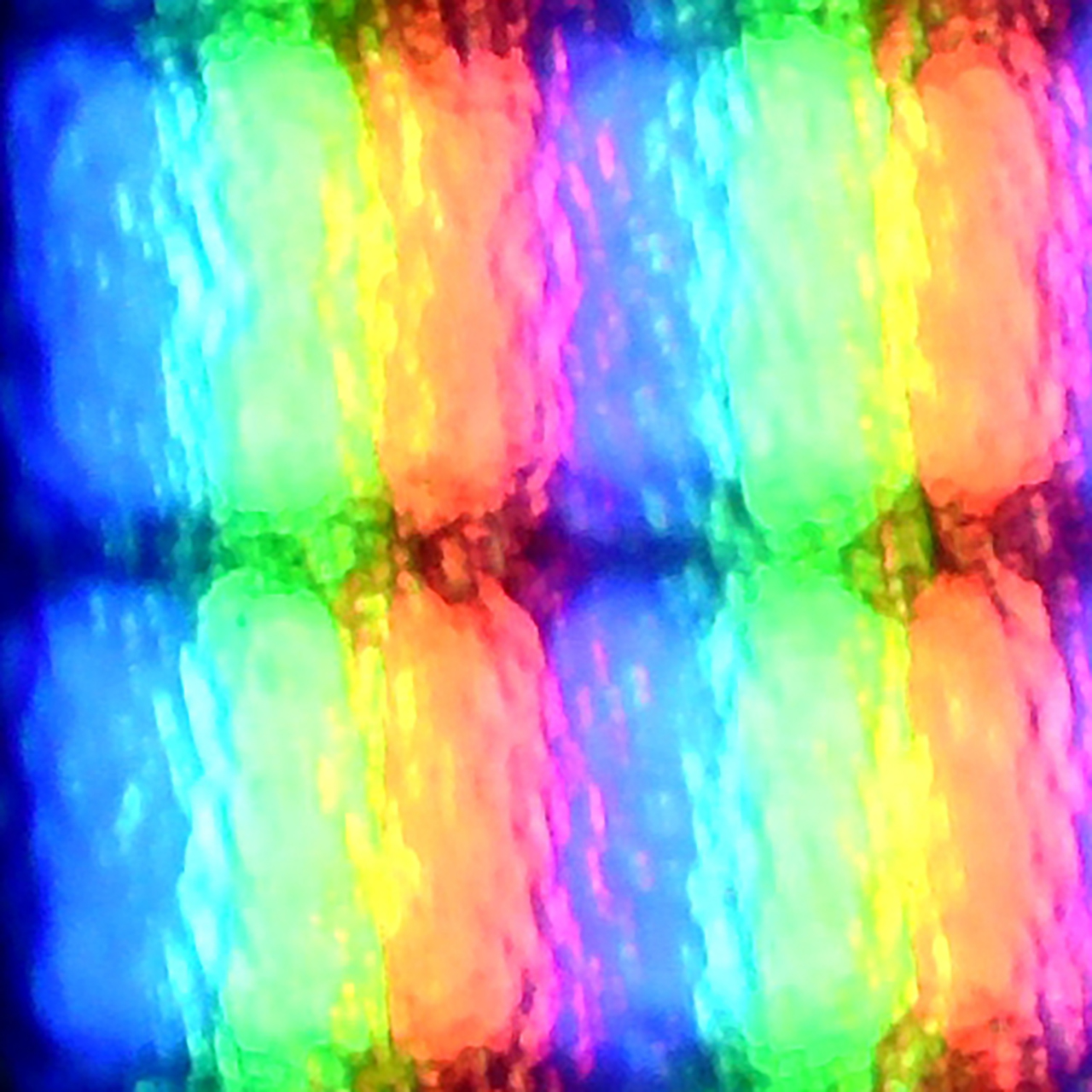
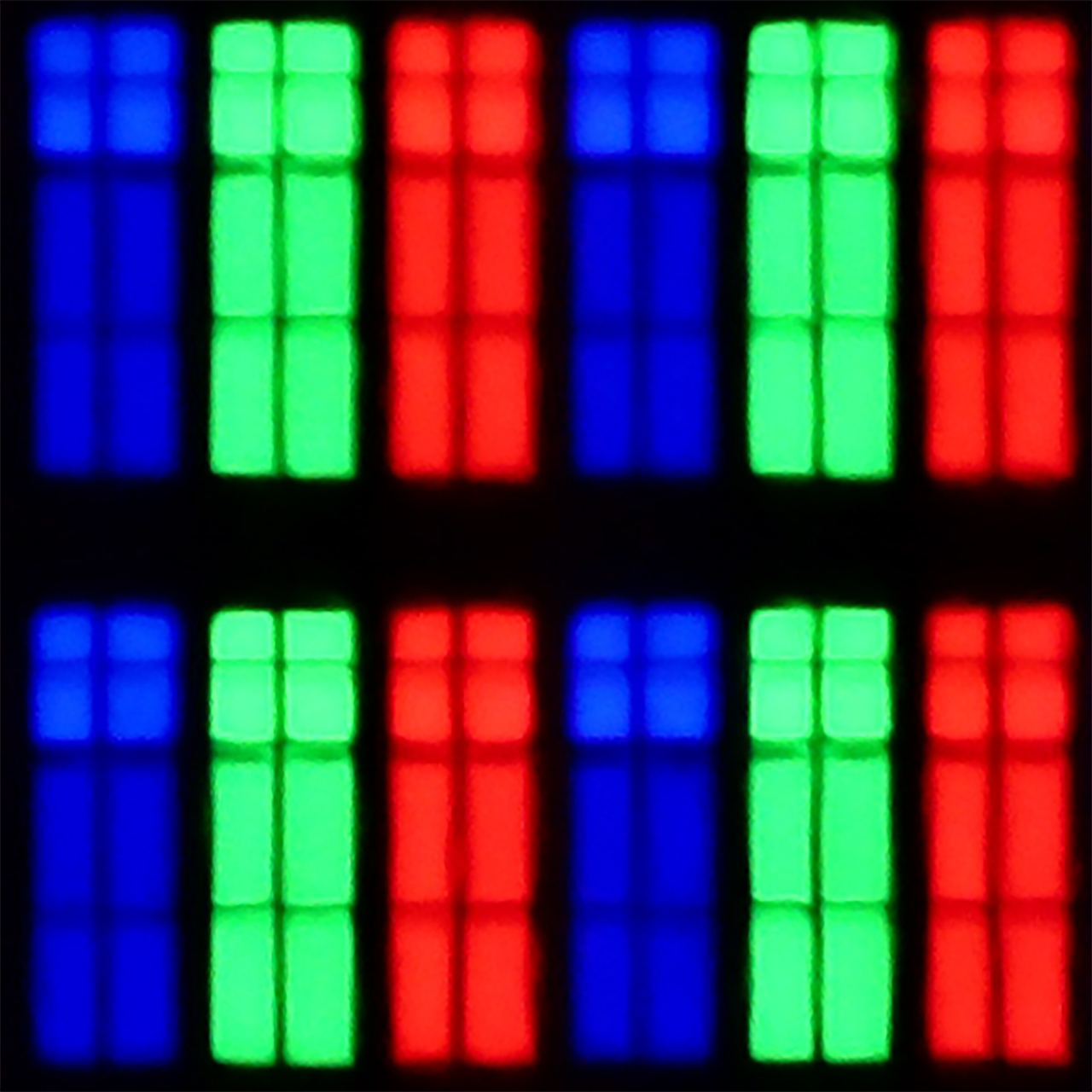
Panel uniformity and thermal imaging:


Samsung The Frame 2025 (LS03F)
Panasonic W95B
TV features
7.2/10
6.8/10
- HDMI inputs3 x HDMI 2.0, 1 x HDMI 2.1 40Gbps2 x HDMI 2.0, 2 x HDMI 2.1 48Gbps
- OutputsToslink (Optical audio), eARC (HDMI), ARC (HDMI)Toslink (Optical audio), eARC (HDMI), ARC (HDMI), Mini-Jack (Headphones)
- Network InterfacesWi-Fi 2.4GHz, Wi-Fi 5GHzWi-Fi 2.4GHz, Wi-Fi 5GHz, Ethernet (LAN) 100Mbps
- TV receptionDVB-T, DVB-T2, DVB-S, DVB-S2, DVB-CDVB-T, DVB-T2, DVB-S, DVB-S2, DVB-C
Classic features:
- Recording to USB (terrestrial TV)
- Recording programming
- Picture in Picture (PiP)
- RF remote control (no need to aim at the screen)
- Backlit remote control
- Teletext
- Audio only mode
- Bluetooth headphones support
- Simultaneous Bluetooth headphones & TV audio
Smart features:
- AirPlay
- Screen mirroring (Windows Miracast)
- Voice search
- Voice search in native language
- Ability to connect a keyboard and mouse

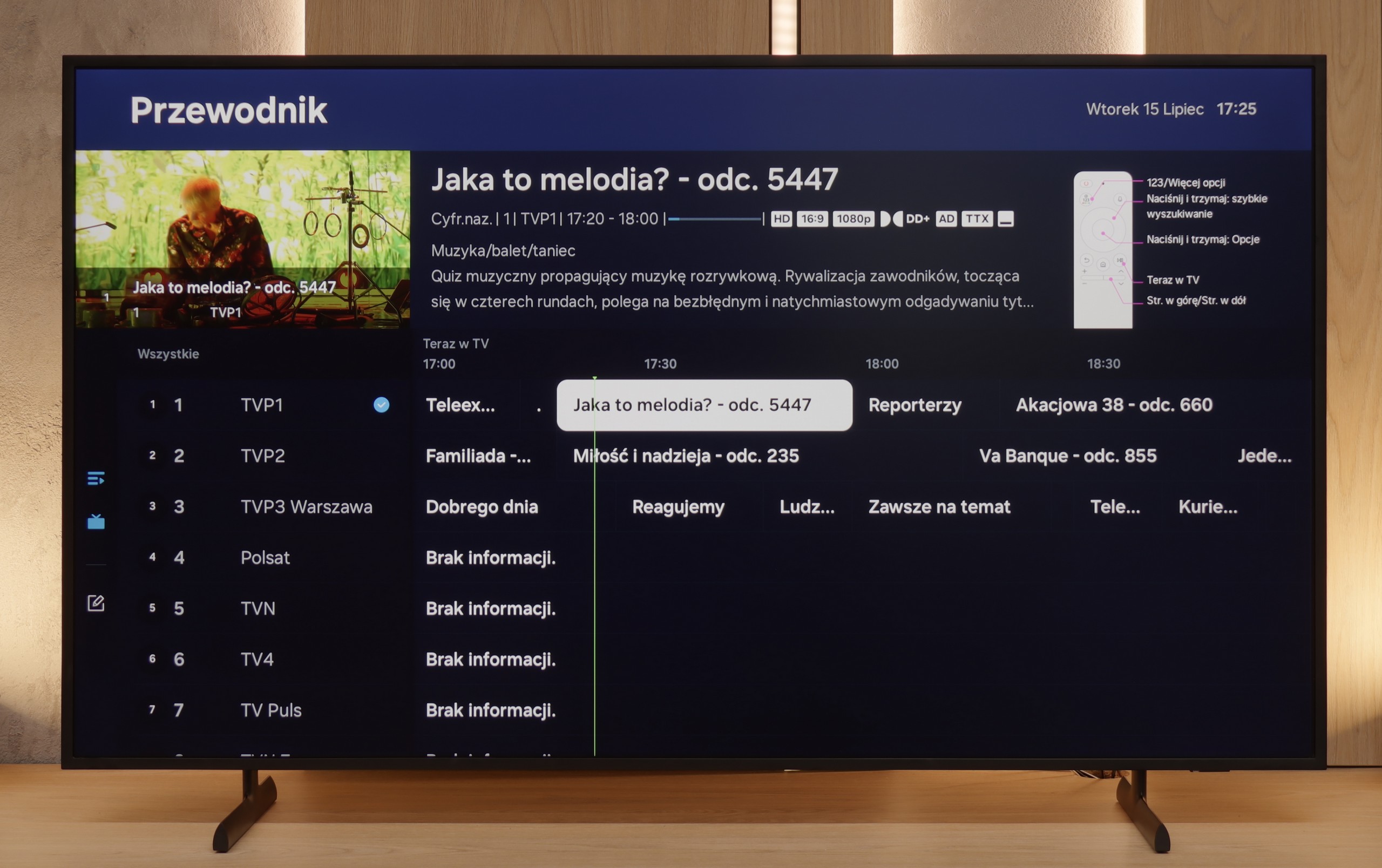



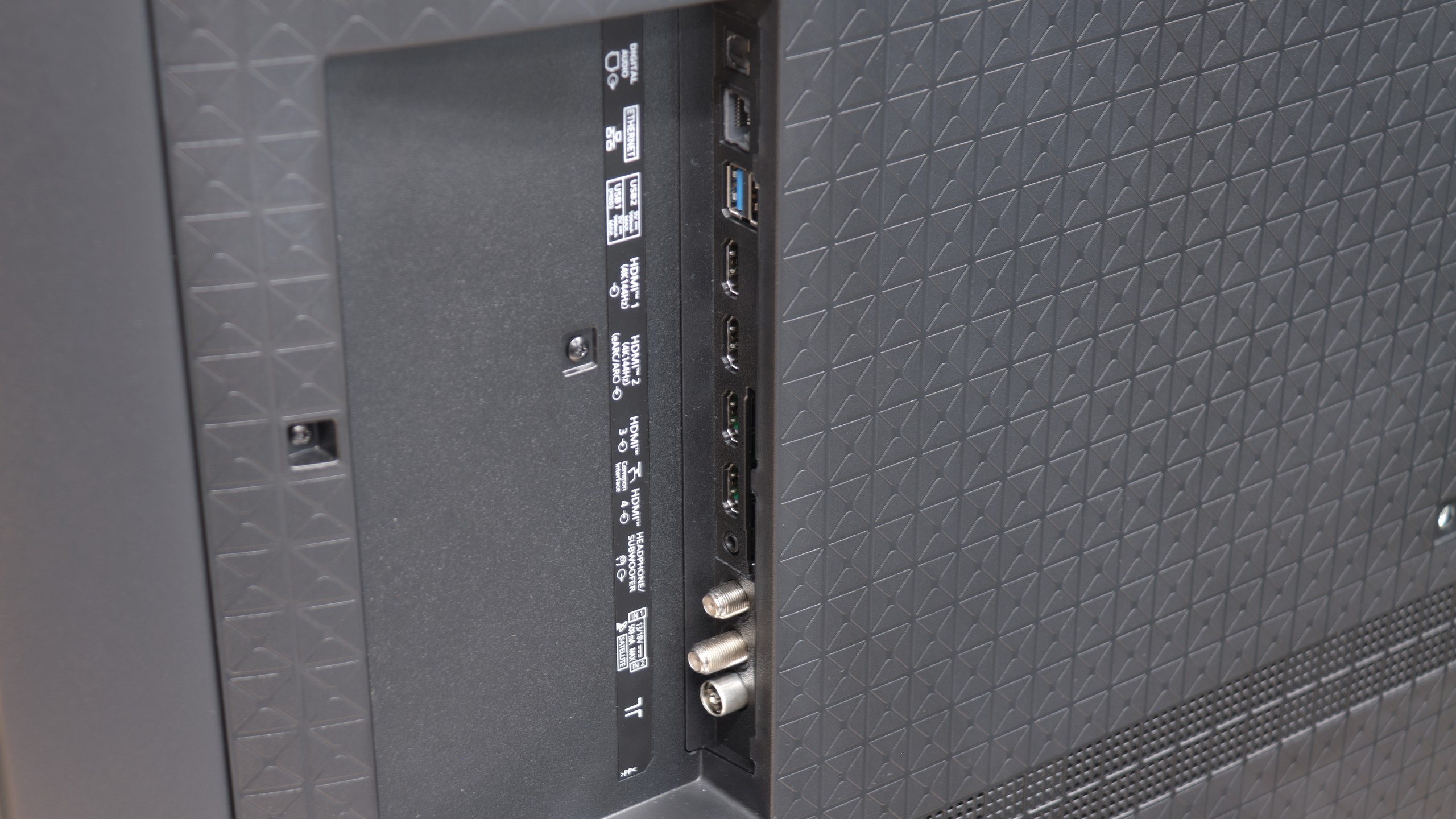
Classic TV Features
In terms of classic features, The Frame doesn’t stand out in any significant way compared to its competitors. There’s no option for USB recording or PiP (picture in picture), which may be disappointing for some users. On the other hand, the TV allows simultaneous use of speakers and headphones, which can be useful – especially for older users. The EPG, or electronic programme guide, is quite readable, and despite the absence of traditional buttons on the remote, we managed to launch even the teletext. In everyday use, the basic functions work smoothly and without major complaints.
Smart System – Tizen and Apps
The Frame 2025 runs on the Tizen system, which has been regarded as one of the most refined Smart TV solutions on the market for years. It’s a system designed for devices that are more than just a television – and it has been designed with this spirit in mind. Tizen offers full integration with external devices – supporting both Apple AirPlay and Miracast. Thanks to the SmartThings app, it’s possible to control not only the television but also other devices within the smart home framework. Since last year, Samsung has also been developing its own voice assistant with support for the Polish language, which significantly facilitates operation. However, the greatest strength of the Smart system in The Frame remains the Art Gallery app. Although access to it is paid (via subscription), it offers the best art scans on the market – we’re talking about scans, not just ordinary photos. This makes the effect of a digital painting hanging on the wall appear significantly better than in any other lifestyle TV.
SmartTV Features W95B
Unfortunately, this is yet another Achilles' heel of the Panasonic W95B model. The Fire TV operating system used here in its European version is poorly refined – it lacks many key applications, and the interface operates sluggishly and clumsily in places. While it does have basic features like AirPlay and Screen Mirroring, it's a poor consolation compared to how smoothly platforms from other manufacturers operate. As a result, despite the excellent picture quality, the television falls short of expectations in terms of software.
User Features W95B
In terms of user features, the Panasonic W95B performs much better. The television offers Bluetooth, a classic well-equipped remote control, and the ability to record programs to USB from built-in terrestrial TV tuners – a rarity that many competing models lack. An additional advantage is the presence of a headphone jack, which will certainly please users of older home cinema systems or traditional wired headphones. In terms of hardware equipment, the W95B is therefore a solid and complete television.
Playing files from USB
9.1/10
3.1/10
Supported photo formats:
Maximum photo resolution:
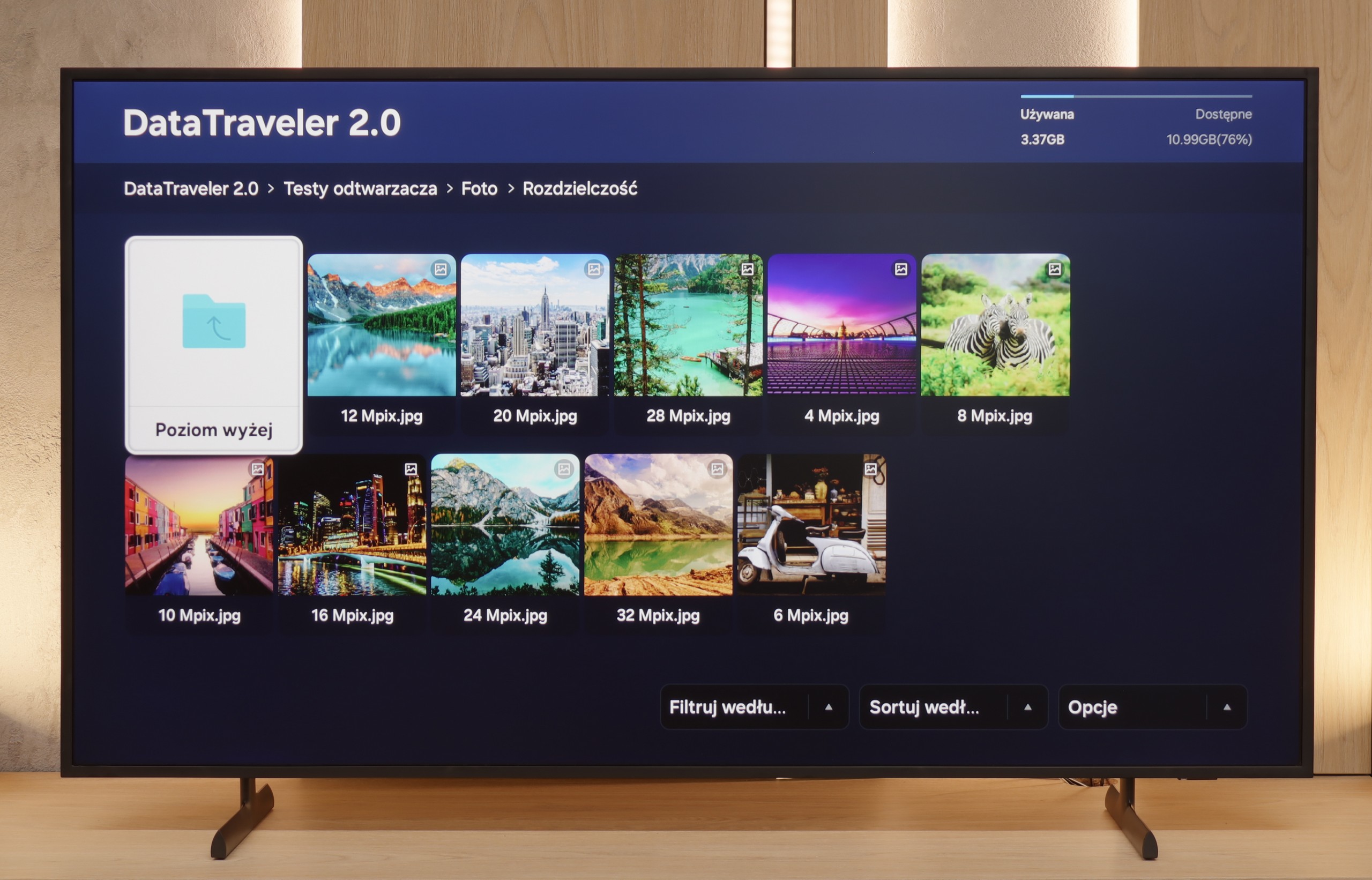
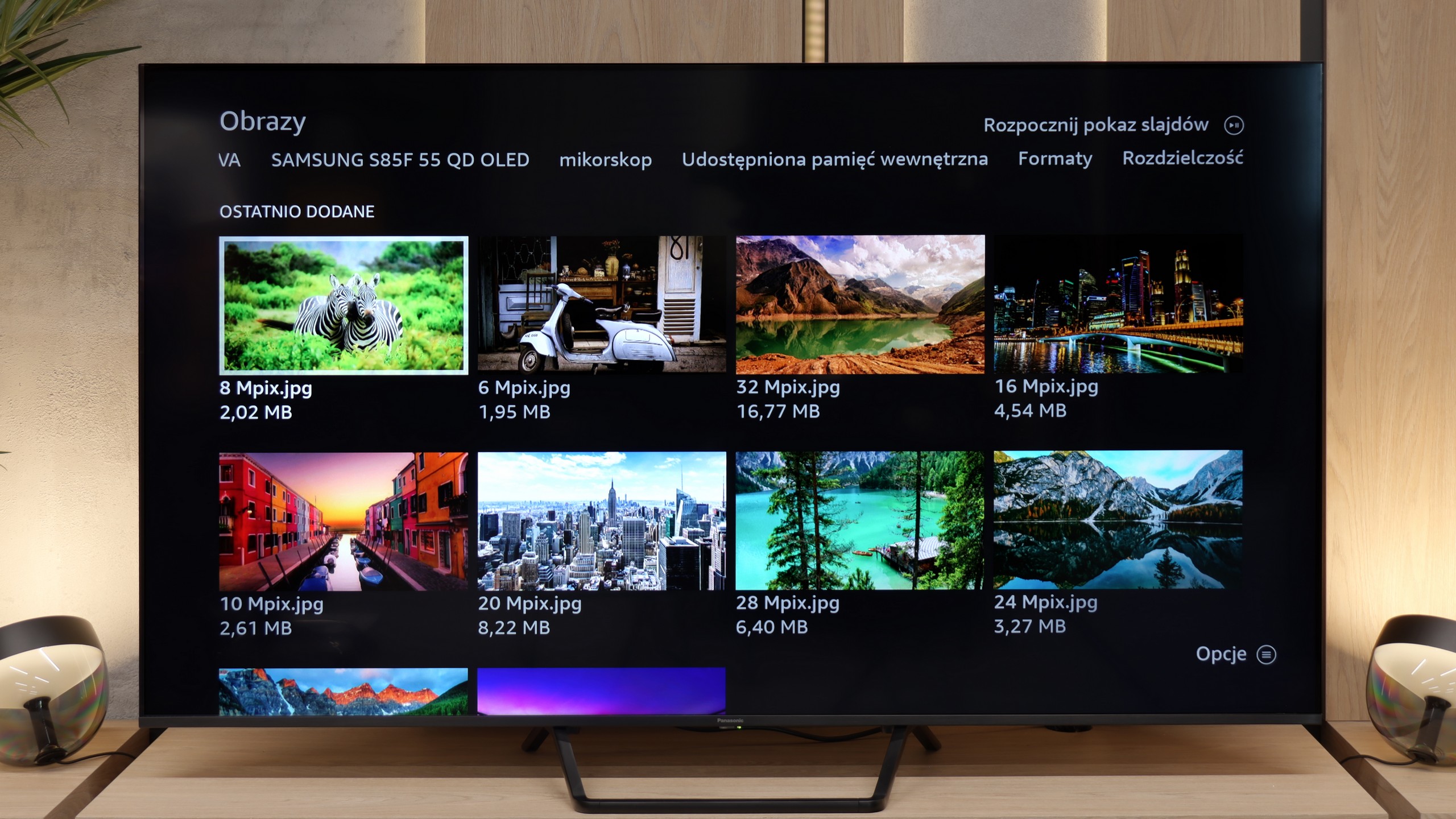
During testing, we didn't notice any major issues with playing files from a USB memory stick. The television handled both video materials and photos well. Of course, there are some exceptions – for example, the lack of support for the HEIC format (used by Apple devices) – but it's hard to consider this surprising. On the positive side, it fully supports high-resolution photos – the television displays high megapixel files without any problems, which can be significant for those wanting to treat The Frame as a digital photo frame as well. However, during testing, we noticed a limitation regarding subtitles – the television only correctly handled files in .txt format. It's worth keeping this in mind and ensuring that downloaded subtitles for films are saved in this format; otherwise, they may simply not display.
This is another issue with the Fire TV system used in the Panasonic W95B. If someone has their own movie library and plans to play them directly from a USB drive or external hard drive, they may be disappointed. The TV handles displaying photos, like from holidays, reasonably well, but video playback is quite limited. The biggest problem is the lack of subtitle display when playing movies from USB. Therefore, if you care about watching files from your own collection, it's definitely better to use an external media player.
Apps
8.7/10
7.2/10














































Sound
6/10
7.9/10
- Maximum volume-82dB
- Dolby Digital Plus 7.1
- Dolby True HD 7.1
- Dolby Atmos in Dolby Digital Plus (JOC)
- Dolby Atmos in Dolby True HD
- DTS:X in DTS-HD MA
- DTS-HD Master Audio
For such a slim television, the sound is quite decent. It’s full, adequate for everyday viewing, but lacks much excitement – typical of flat designs. There's not much bass, although at times it can be heard. The speakers in a 2.0.2 configuration have a total power of 40 W. (in the 55+ inch version) Unfortunately, the television does not support DTS format, so for movies with that sound, you'll need to rely on external equipment, like a home theatre system. You can connect a soundbar, and thanks to the Q-Symphony feature, the television plays along with it. Samsung also offers visually matching models for The Frame like S700D or S800D, but they are sold separately. (This shouldn’t really surprise anyone😉).
The Panasonic W95B performs surprisingly well for a television. The sound is clear and spacious, and thanks to the subwoofer located at the back, you can even hear a slightly perceptible bass, which is not often found in TVs of this class. The overall sound quality is at a very high level, allowing for comfortable viewing of movies and series without the need to connect an external audio system. Of course, as is well known, if someone wants to watch truly high-quality, it’s worth connecting a soundbar – especially since the Panasonic W95B supports Dolby Atmos format, which allows it to transmit spatial sound without any issues. The only thing missing is support for the less popular DTS:X format, which simply isn’t available in this model.
Acoustic Measurements
No acoustic data
82dBC (Max)
75dBC
